Naples, Italy - 2017
Since visiting Pompeii from Amalfi some years ago, we’d said we’d go back to the area to visit Herculaneum some time.Destroyed by the same eruption as Pompeii, it was mainly covered in ash and people died from the heat and fumes, so more of some buildings were preserved than in Pompeii.
I’d also discovered Baia, a Roman ‘resort’ where the rich and powerful had seaside villas (using the thermal springs for baths), but which sank as a result of seismic activity.
The ruins of the port and numerous villas and roads around them now lie a few metres below the surface, perfect for leisurely diving and even visible to snorkelers.
With these two sites primarily in mind, I booked us a 4 day stay at the San Francesco Al Monte hotel in Naples. The hotel is a former convent, high above Naples (below the Castel St Elmo) with panoramic views of the city, bay and Vesuvius.
We took a (very) early morning Easyjet flight from Gatwick and arrived in Naples around 9:30. A taxi took us to the hotel (a good introduction to the chaos of Naples driving) and the driver short changed us 10 Euros (Italians, in our experience of a number of visits, tend to be delightful or snide crooks, with little in between – Beware if you visit, as someone will try, at least, to con you).
Luckily, the hotel staff were friendly and, arriving too early to check in, we left our bags there and headed out to explore the town.
Naples isn’t Amalfi, or even Rome, it’s a pretty grimy, dirty, low rent city, with that amazing land/sea scape and points of remarkably historic significance.
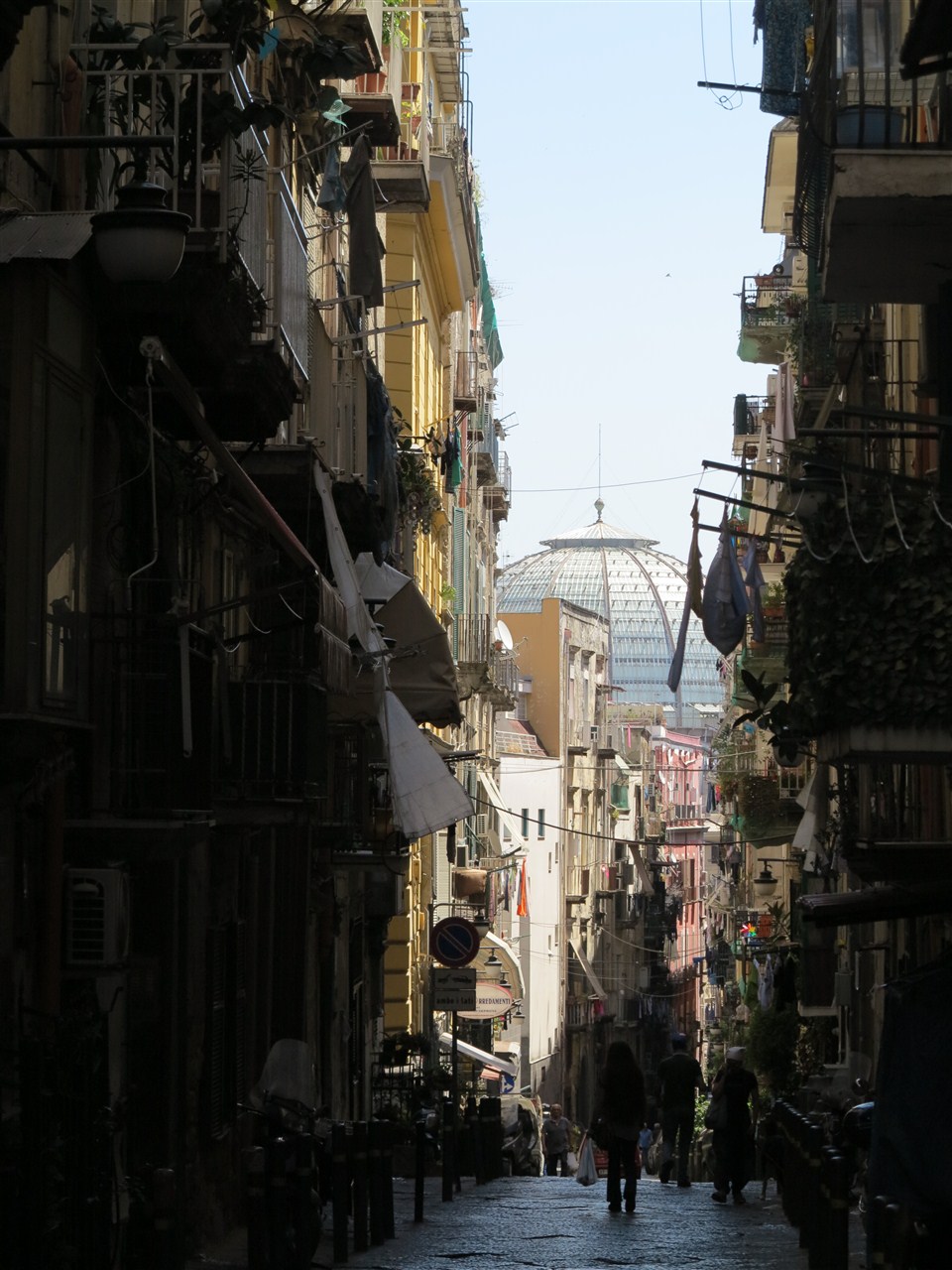
Narrow, hemmed streets typical of Naples.
Mandy quickly coined the phrase “The streets of Naples are paved with Dog Sh*t” as the Neapolitans clearly don’t ‘bag up’ after their dogs do the business, but we managed to navigate it enough to reach the seafront near to the Castel D’Ovo, which we visited.
Entry was free and the castle is pretty impressive, with views back towards the city and out to see, towards Capri and back over to Vesuvius.
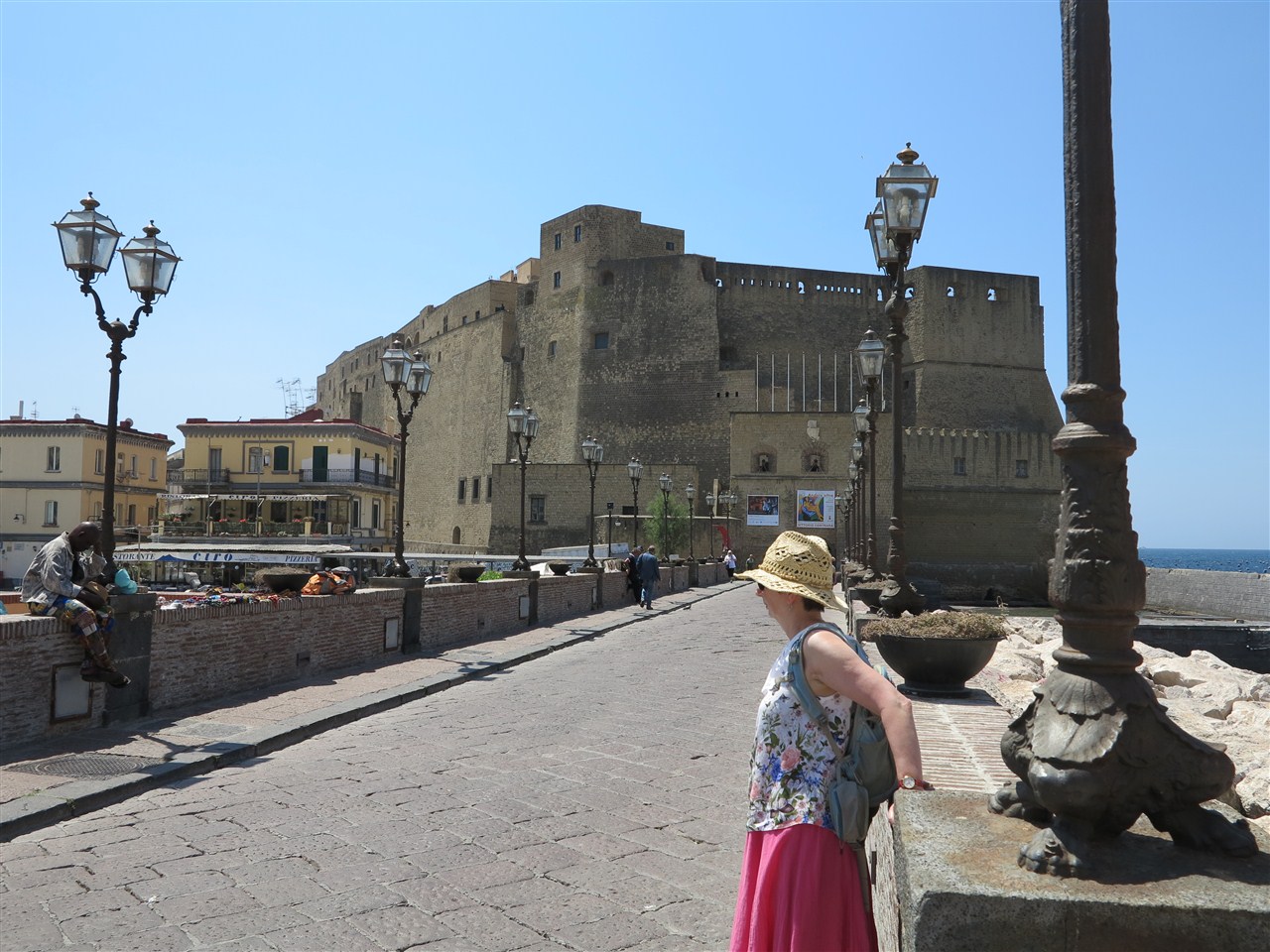
Castel D'Ovo sits on a small island
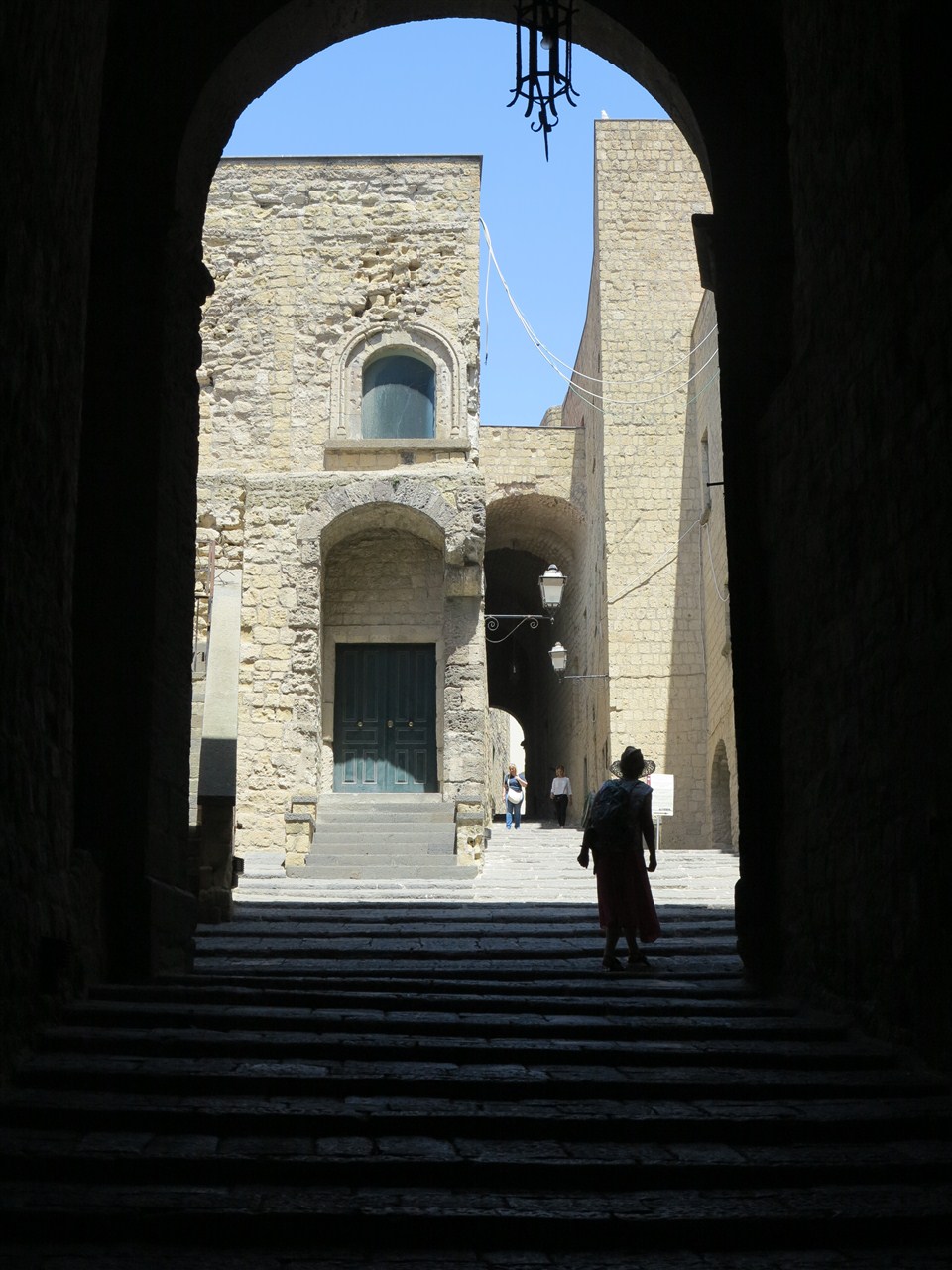
Within the walls of the Castel D'Ovo
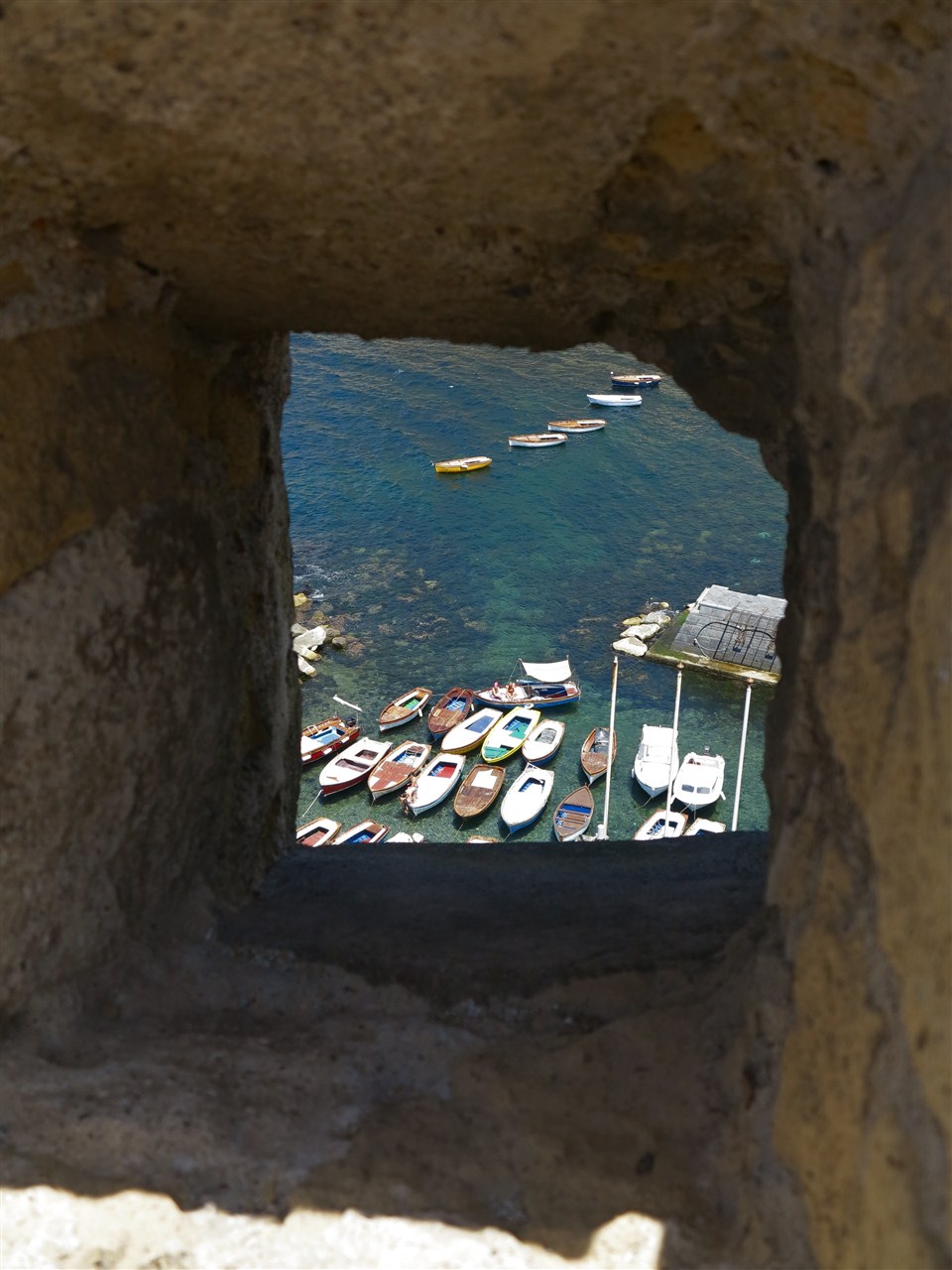
Boats in the lee of the Castel D'Ovo from the ramparts
We then wandered back along the sea front and I did a quick tour of the Castel Nuovo, Mandy deciding she’d had enough of walking by this point. It’s not as interesting as the Castel D’Ovo if you can only do one, but it was still worth a look.
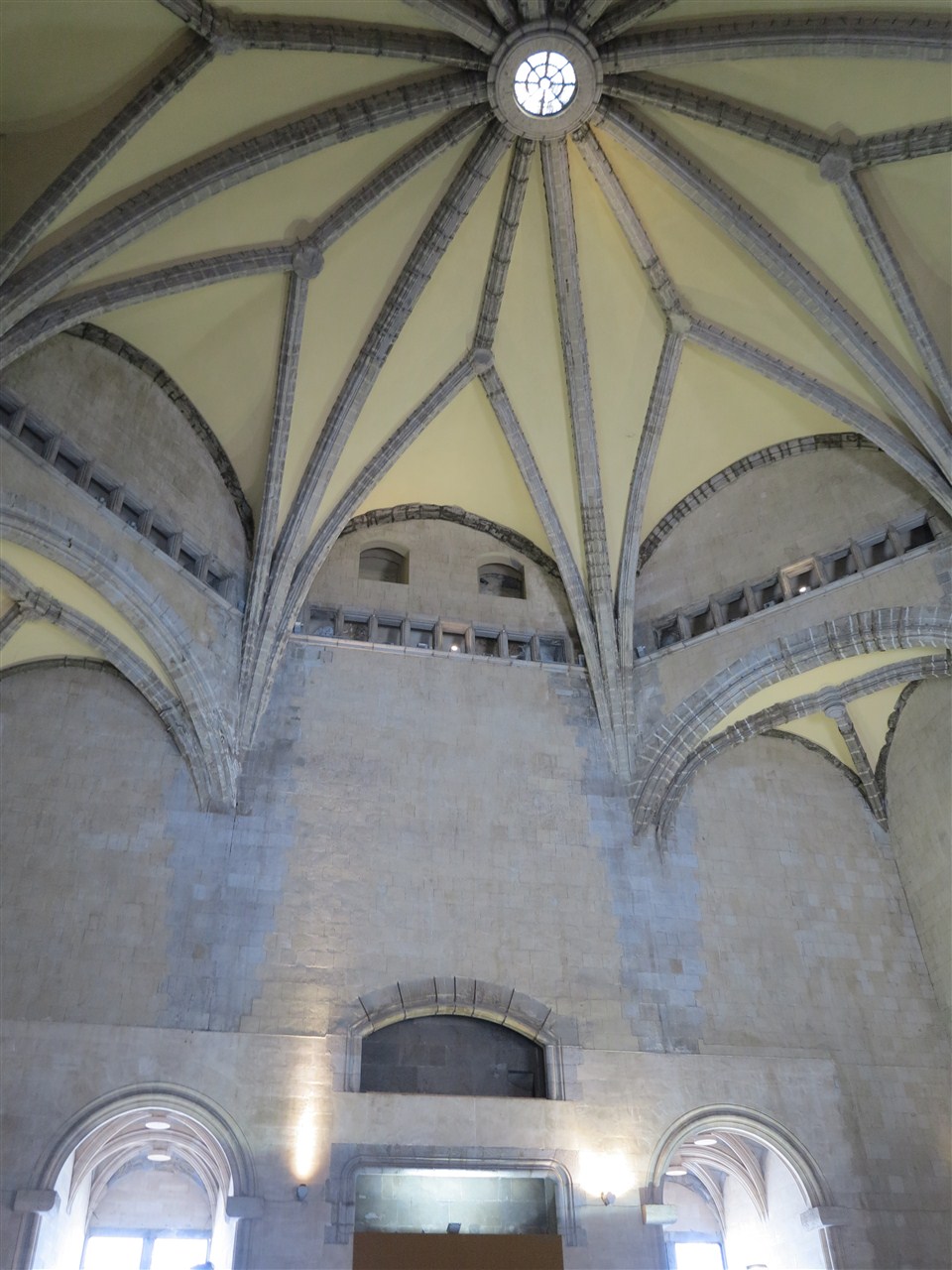
Interior of the Castel Nuovo
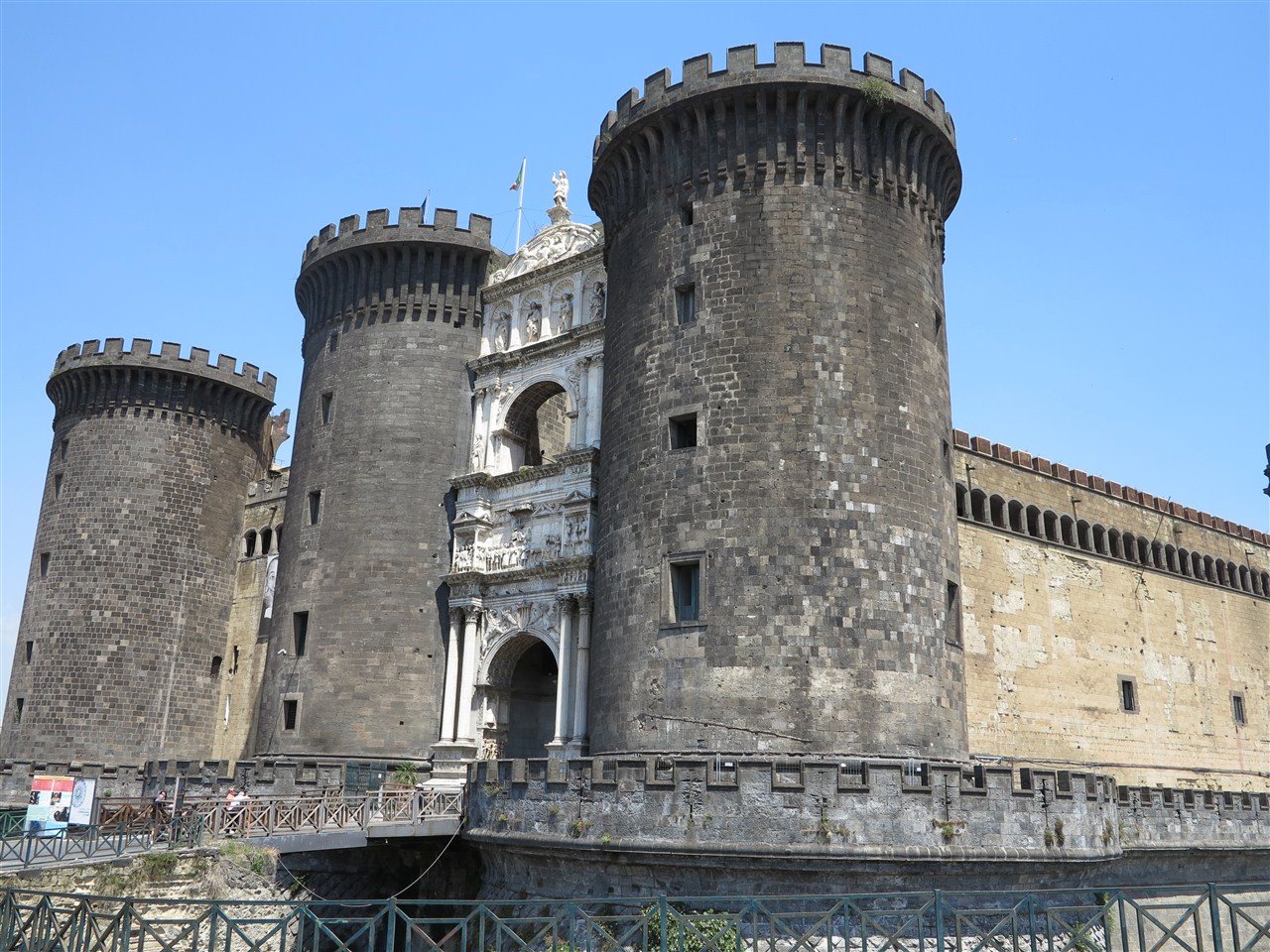
Castel Nuovo
We got back to the hotel around 3PM and went to our room. It was a couple of small rooms, with a bathroom off of the second (with a table, chairs and wardrobe in). The room was very comfortable though and the view from the window was stunning, looking across the city and the bay at Vesuvius.
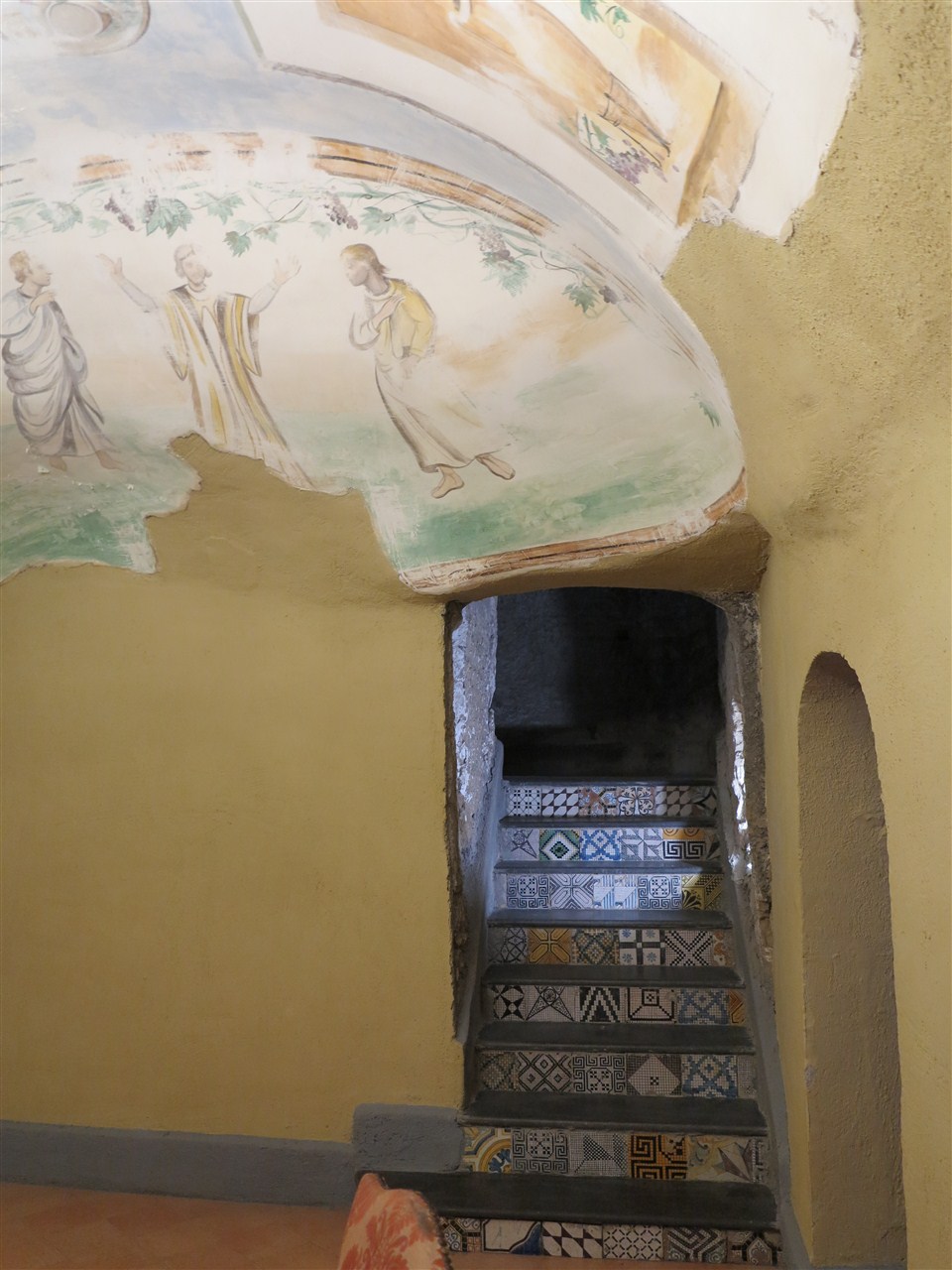
One of the many rooms and staircases within the hotel
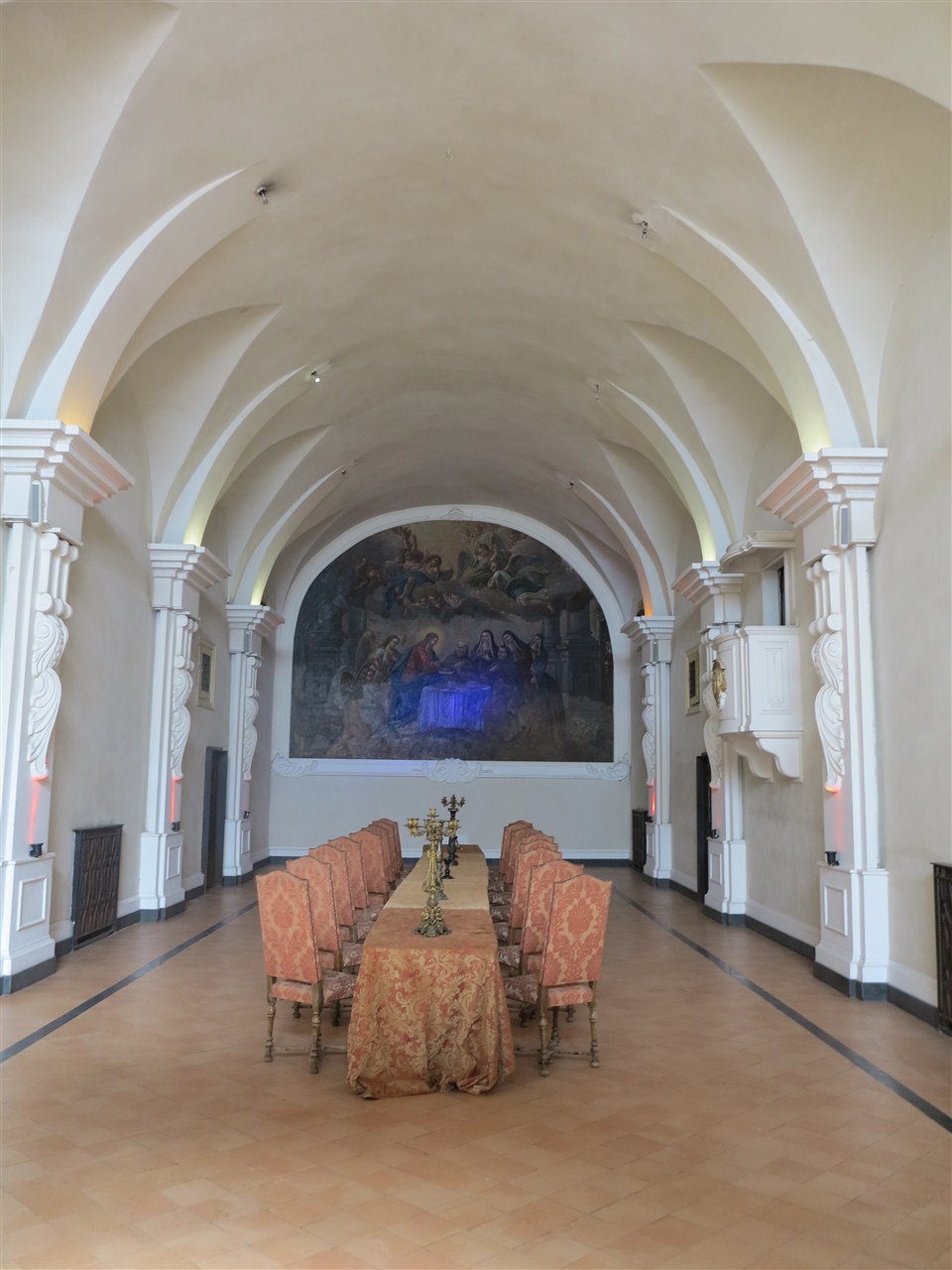
Refrectory within our hotel (events room now)
Incredibly, though, someone has built (and not yet demolished) the ugliest 60s/70s tower block right in the middle of the city on a sightline between the hotel and Vesuvius – It must have been Berlusconi or some similarly corrupt Italian politician who OK’d it as it’s a true ‘Carbuncle’ on a beautiful and impressive view.
We wandered up to the 7th floor (in a lift that has views from the 5th floor up – A bit of a shock first time as the bay suddenly appears in front of you!) and had a quick dip in the small, but lovely, pool (although it was a bit chilly!) and then had a drink while admiring the views.
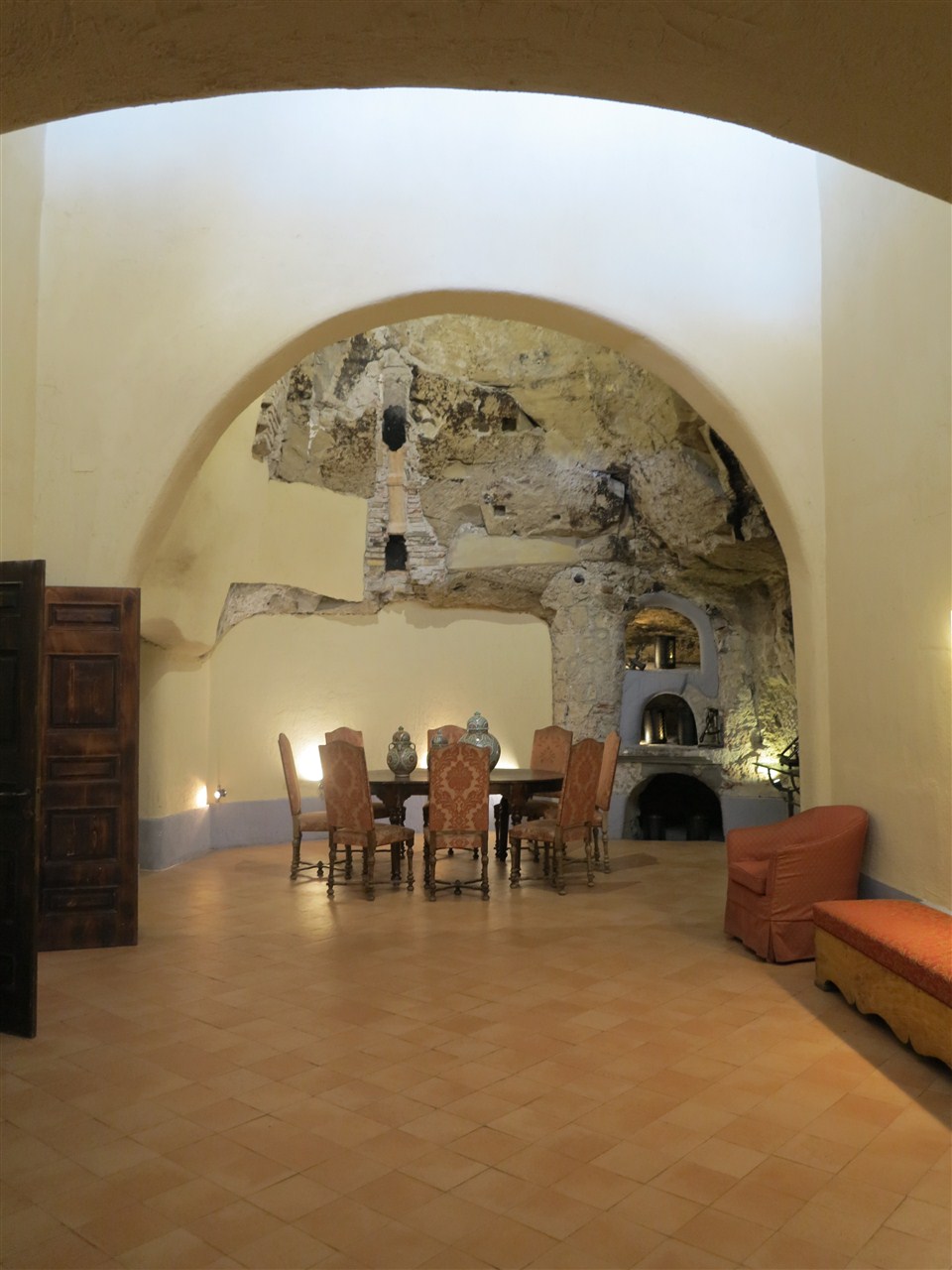
Another of the old Convent rooms
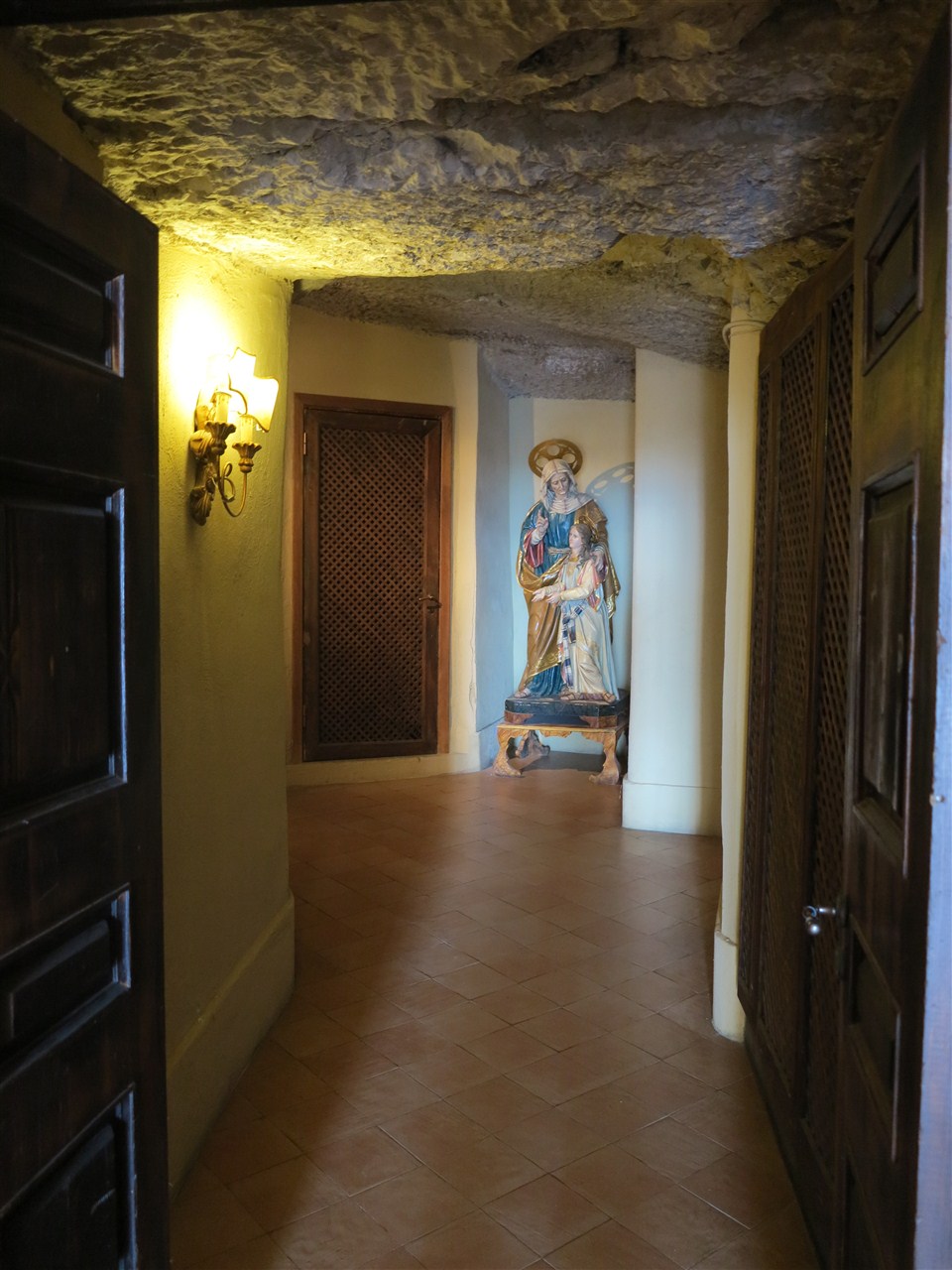
And another!
Certainly make time to go and have a look if you ever visit.
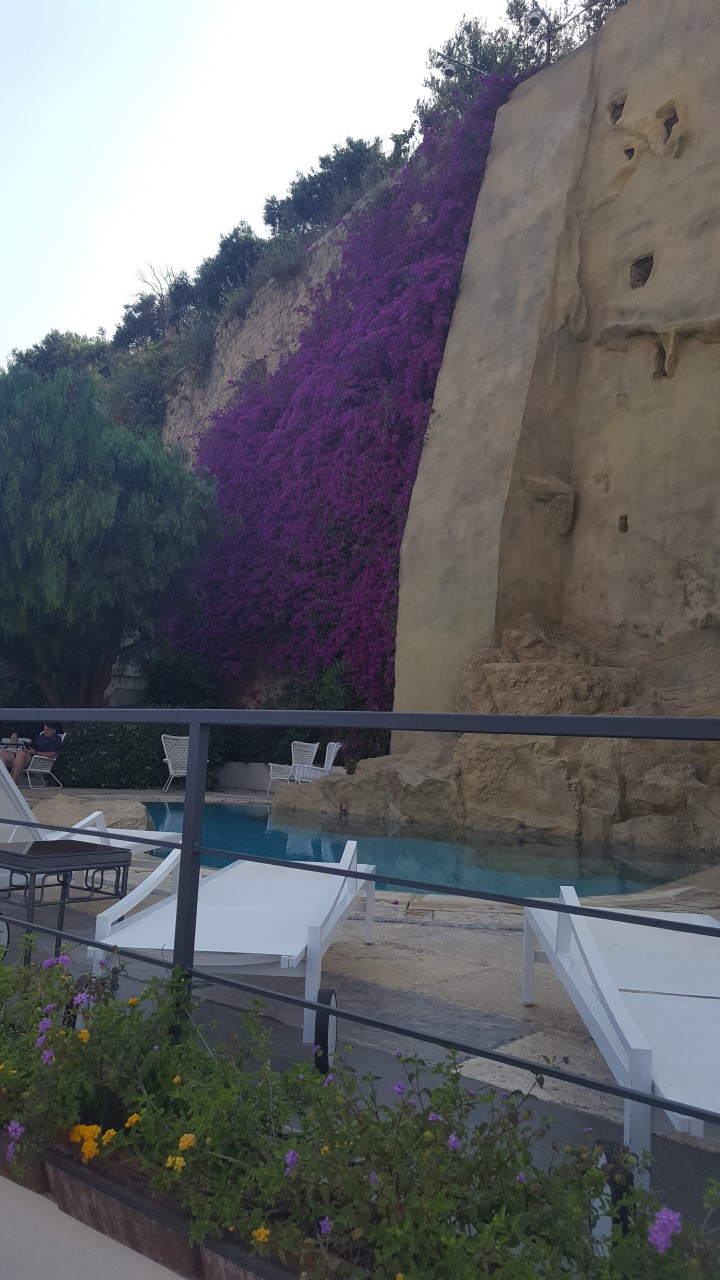
Rooftop pool and garden well worth a visit

Panoramic view from the restaurant - Well worth staying here just for the view!
Tripadvisor had recommended travelling up the nearby Montesanto funicular to find a selection of nice restaurants. We did so, but, not venturing far on our tired feet, didn’t find much selection, although the street pizzeria we ate in did a good Pizza and rounded out a nice day in a warm, relaxing evening.
We both slept pretty well, but our plan for Friday was to visit Baia. We had hoped that we might get there early enough to visit the land ruins, but a few miscues (involving the wrong Montesanto station and then a bad tip about where to change from the wrong train), meant it took a bit longer than we thought.
We did arrive, though, at the Centro Sub Campi Flegrei dive centre an hour earlier than we were expected, but were happy to sit in the shade until other divers and snorkelers arrived.
The day (which you can read about here, if you’re interested) was quite long and although we had in mind to carry onto Baia, see the ruins and eat dinner there before returning to Naples, we soon realised we wouldn’t have time to do them justice (if visit them at all), so that will have to wait for a future visit.
Tired, we decided to treat ourselves to a nice meal in the hotel. With a private event of some sort in the 4th floor restaurant, we ate in a small restaurant set up in a small room, with an ante-room with a chapel, on the 3rd floor.
The food wasn’t generous portion wise, but it was very tasty. I had Rabbit Sausage and a banana mouse on a coconut biscuit - Very good!
The following day, our plan was to visit Herculaneum. Getting there went much better than our trip to Baia had, but it was quite a long walk (punctuated by one dead end road!) from the Portici-Ercalno Station (perhaps we should have switched trains at the main station on reflection).
However, we arrived about 11AM and paid the modest (we felt) 11 Euros entry. We then spent about 3 hours walking around the ruins. The free guide booklet is very good, providing enough information about the most important buildings to be informative, but enough that you have time to read it as you visit each place.
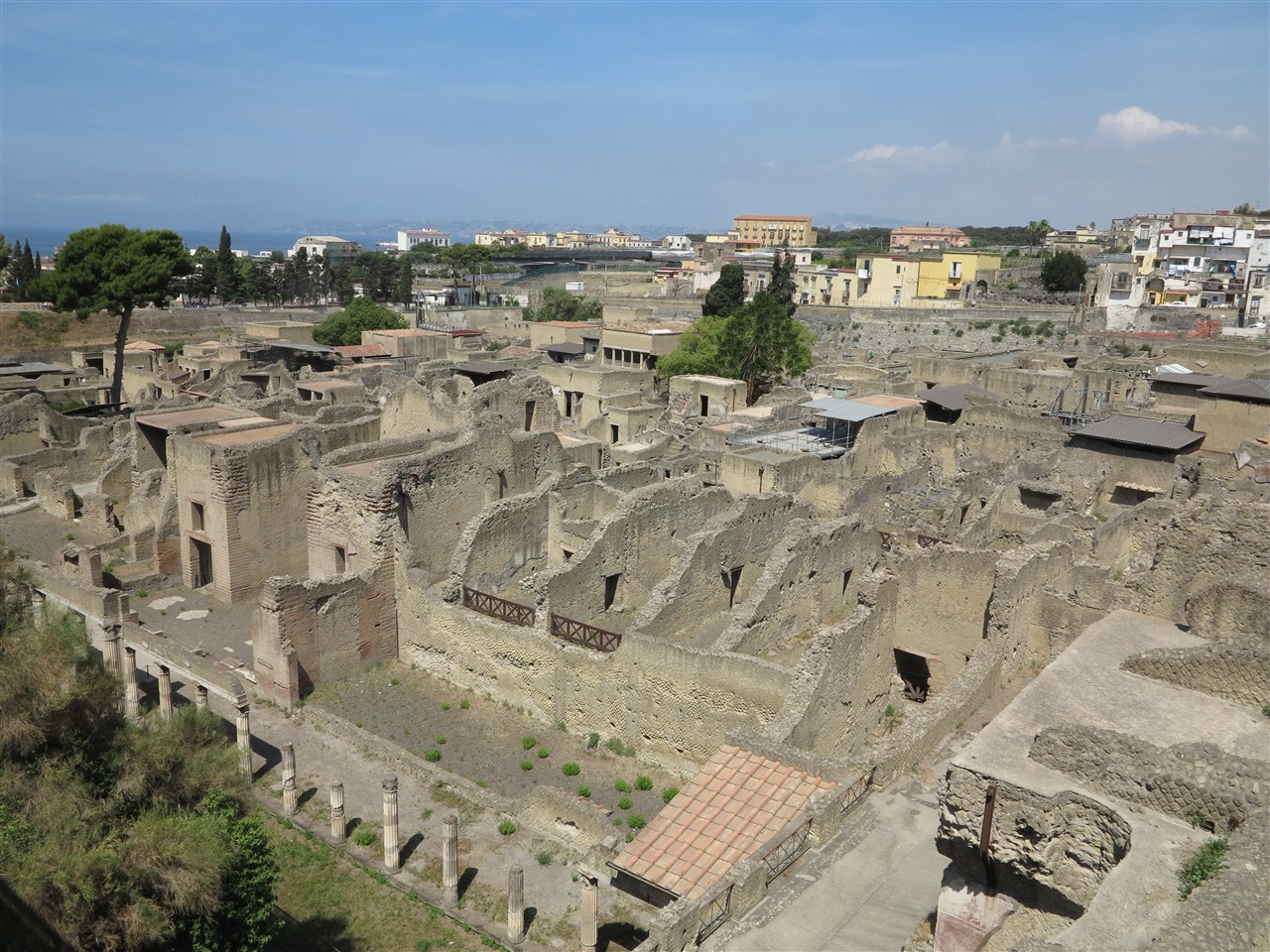
Over view of Herculaneum from the entrance
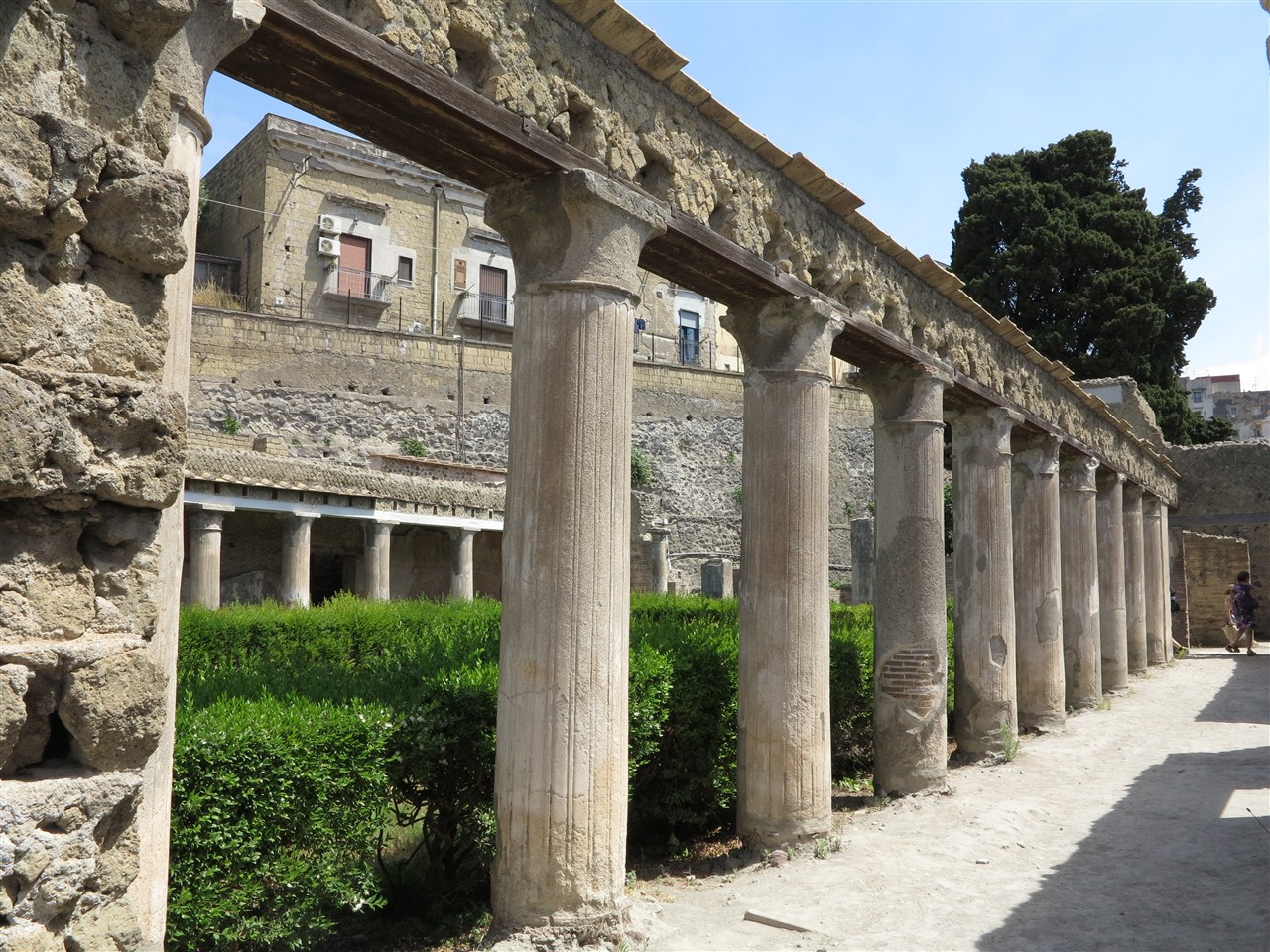
Ruins sit below modern street level
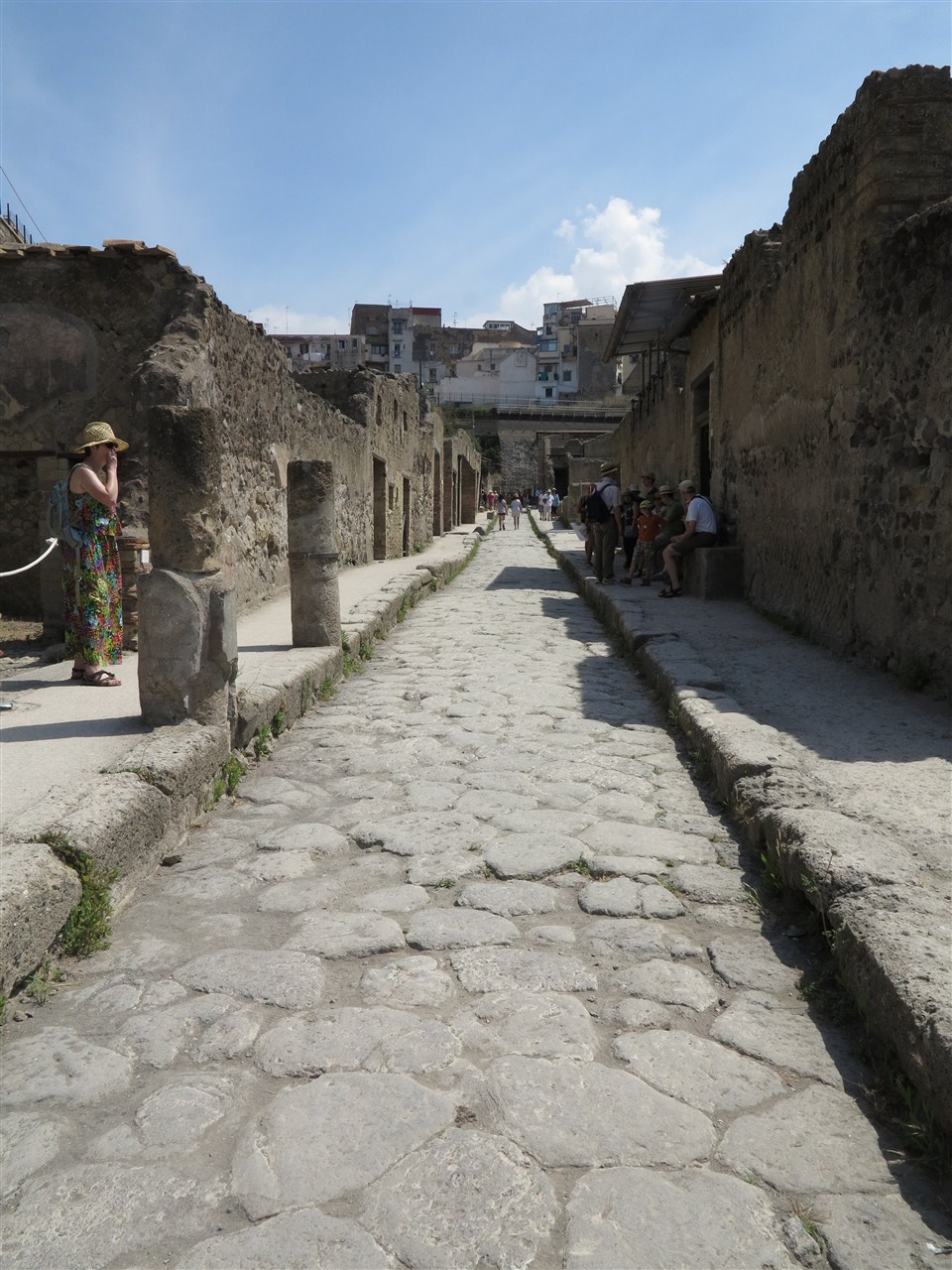
Buildings arranged around typically straight Roman roads
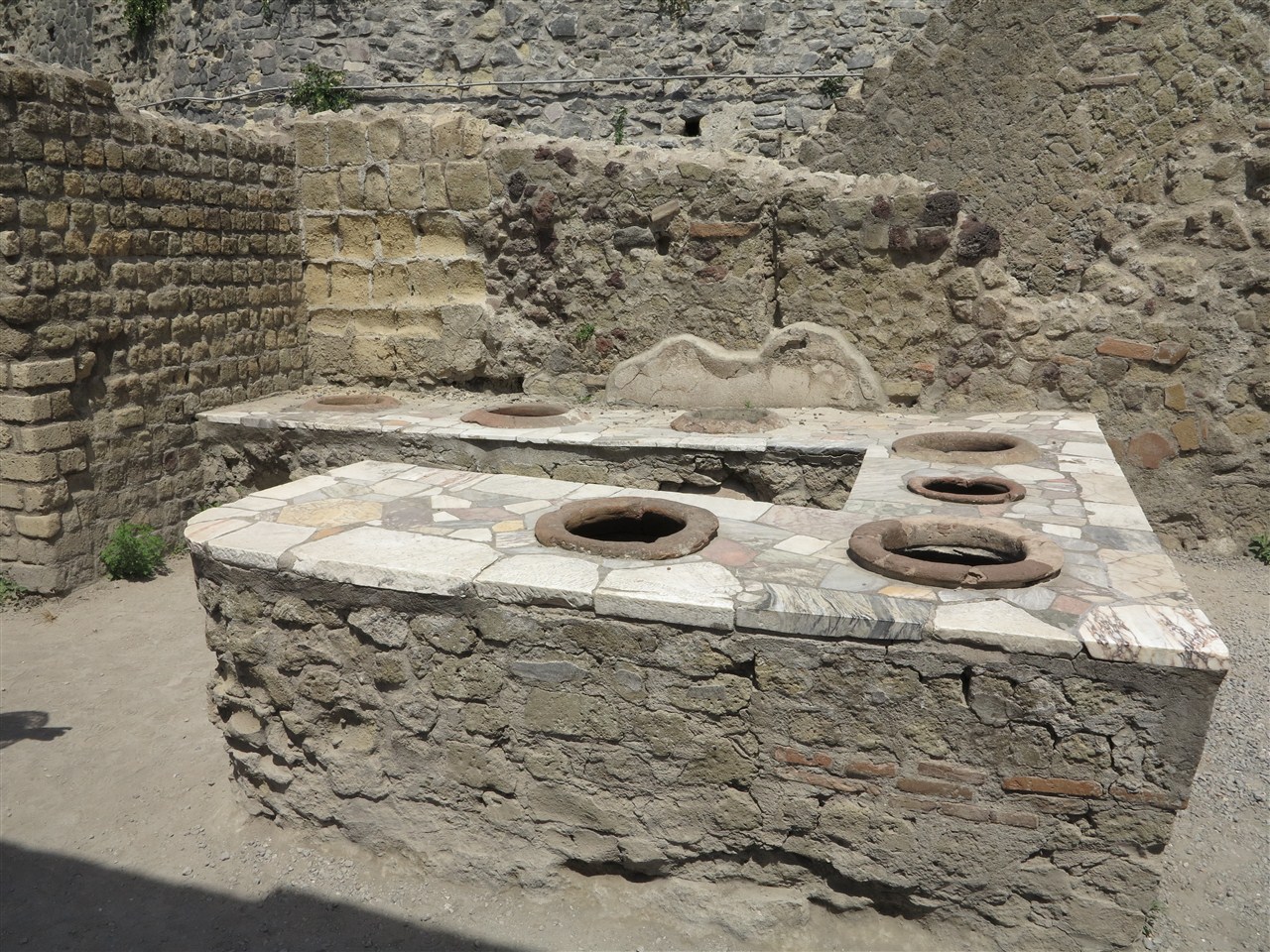
A Roman 'fast food joint'
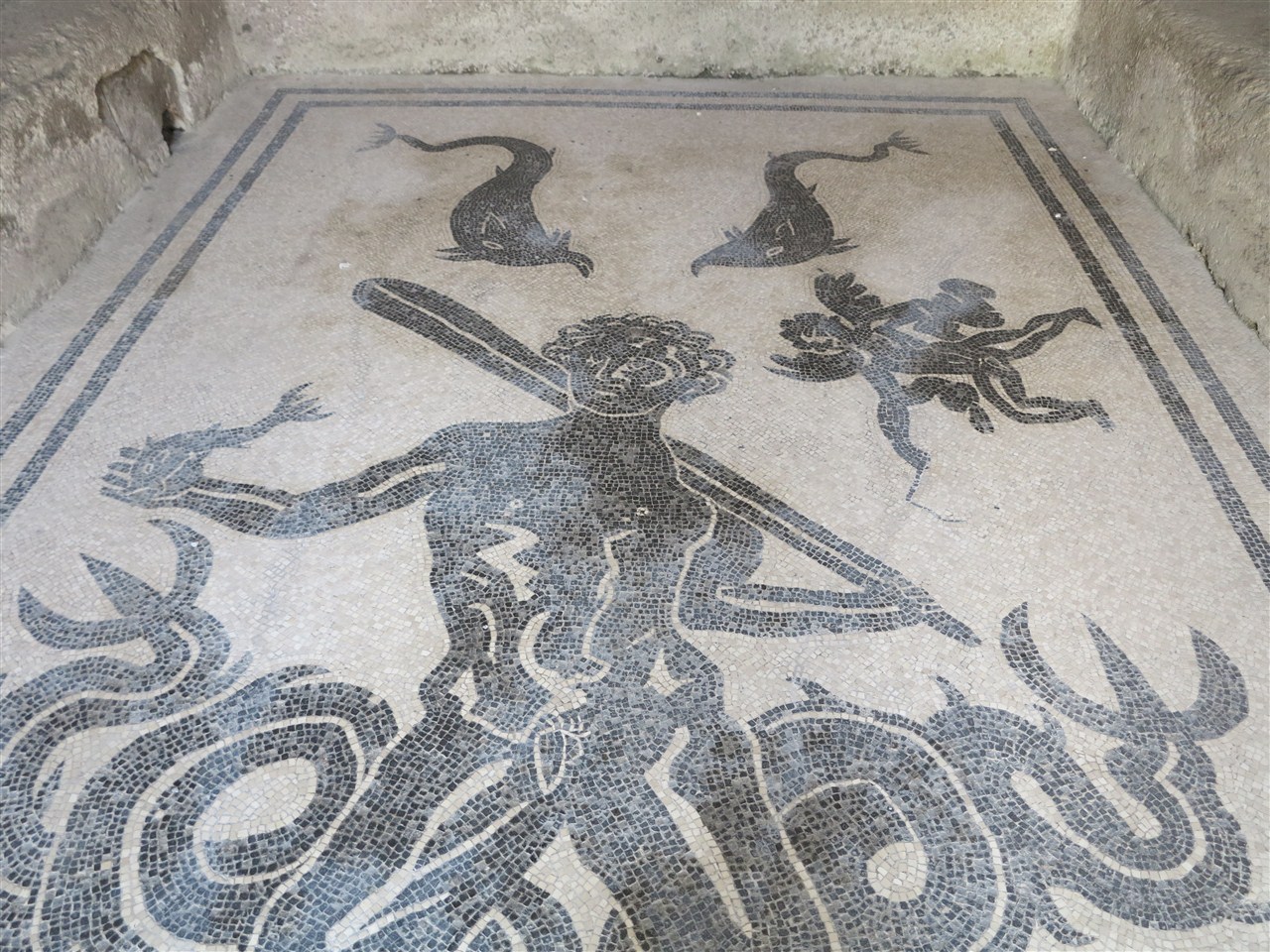
Beautifully preserved mosaics are frequent in Herculaneum
The buildings are most substantially intact than most in Pompeii, but the site overall is much, much smaller.
The route we took (in reverse of the numbering because the ‘entry’ ramp was closed) took us around all the buildings and ended up at the former beach front where cloistered rooms contain the remains of dozens of people who died from the heat and fumes, waiting, in vain, for boats to save them from the volcano.
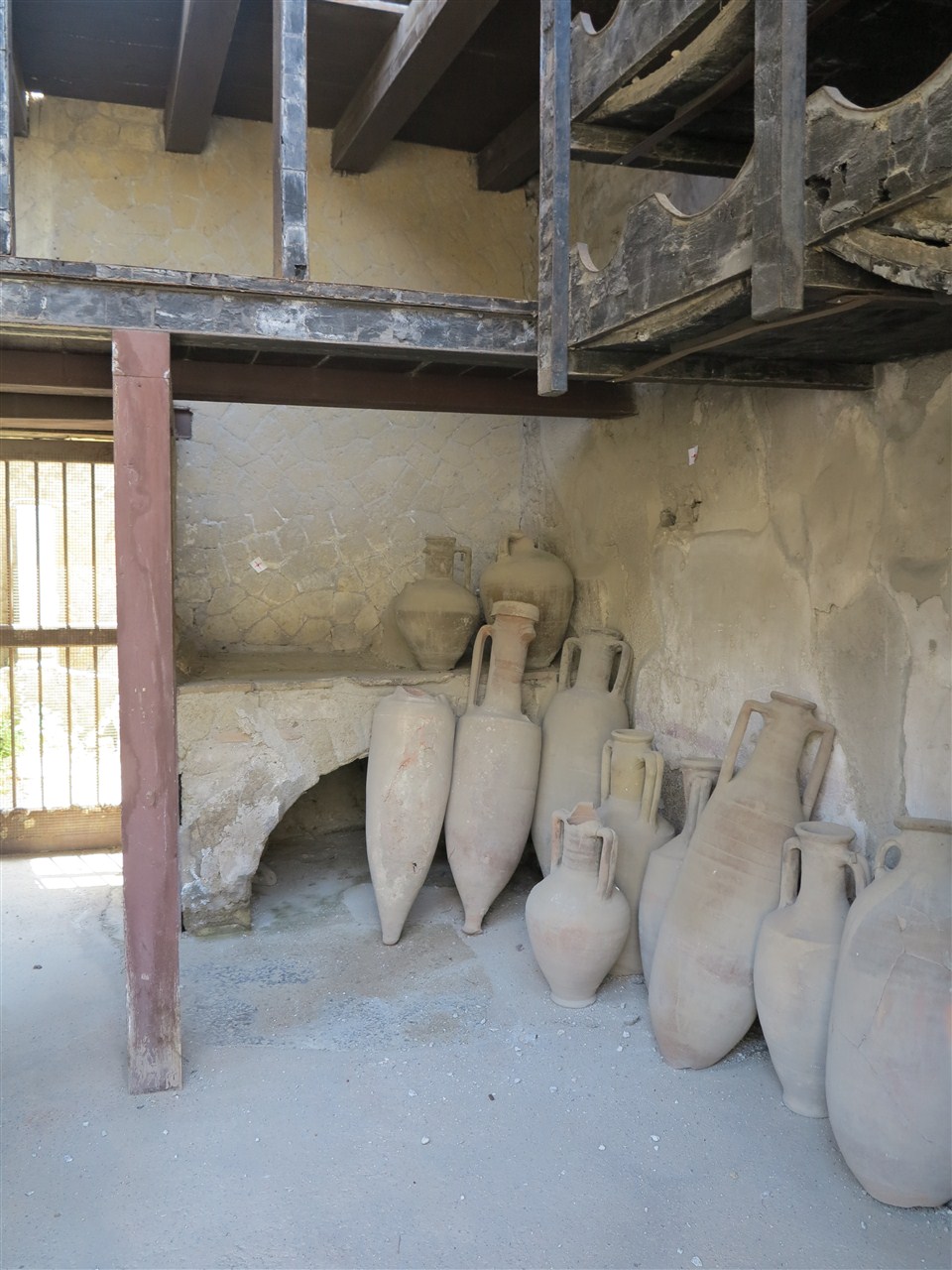
Wood and pottery preserved as ash cloud enveloped town, rather than lava
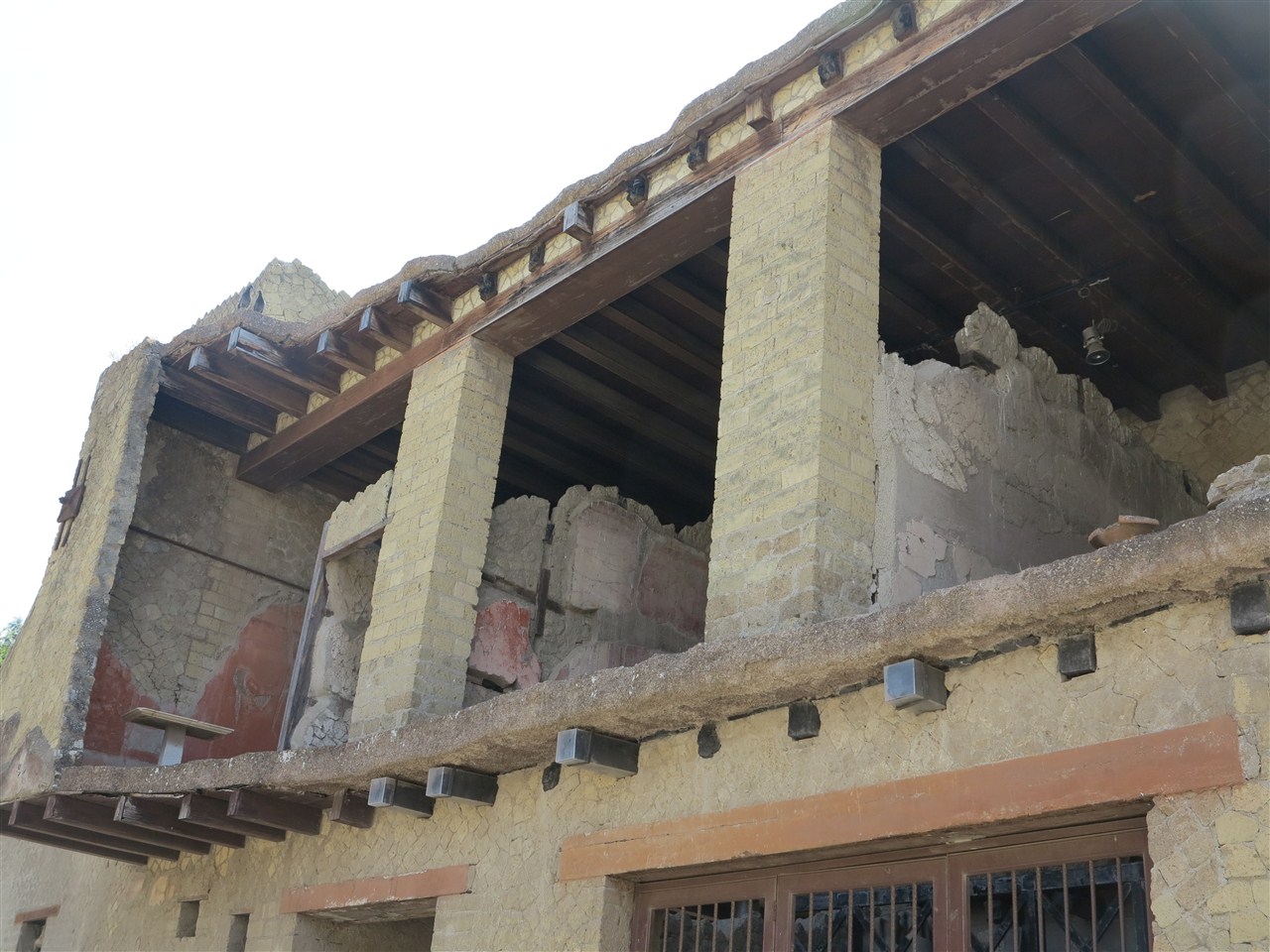
Some building retain their first floors as well as ground for a rare insight into how these buildings looked 2000 years ago!
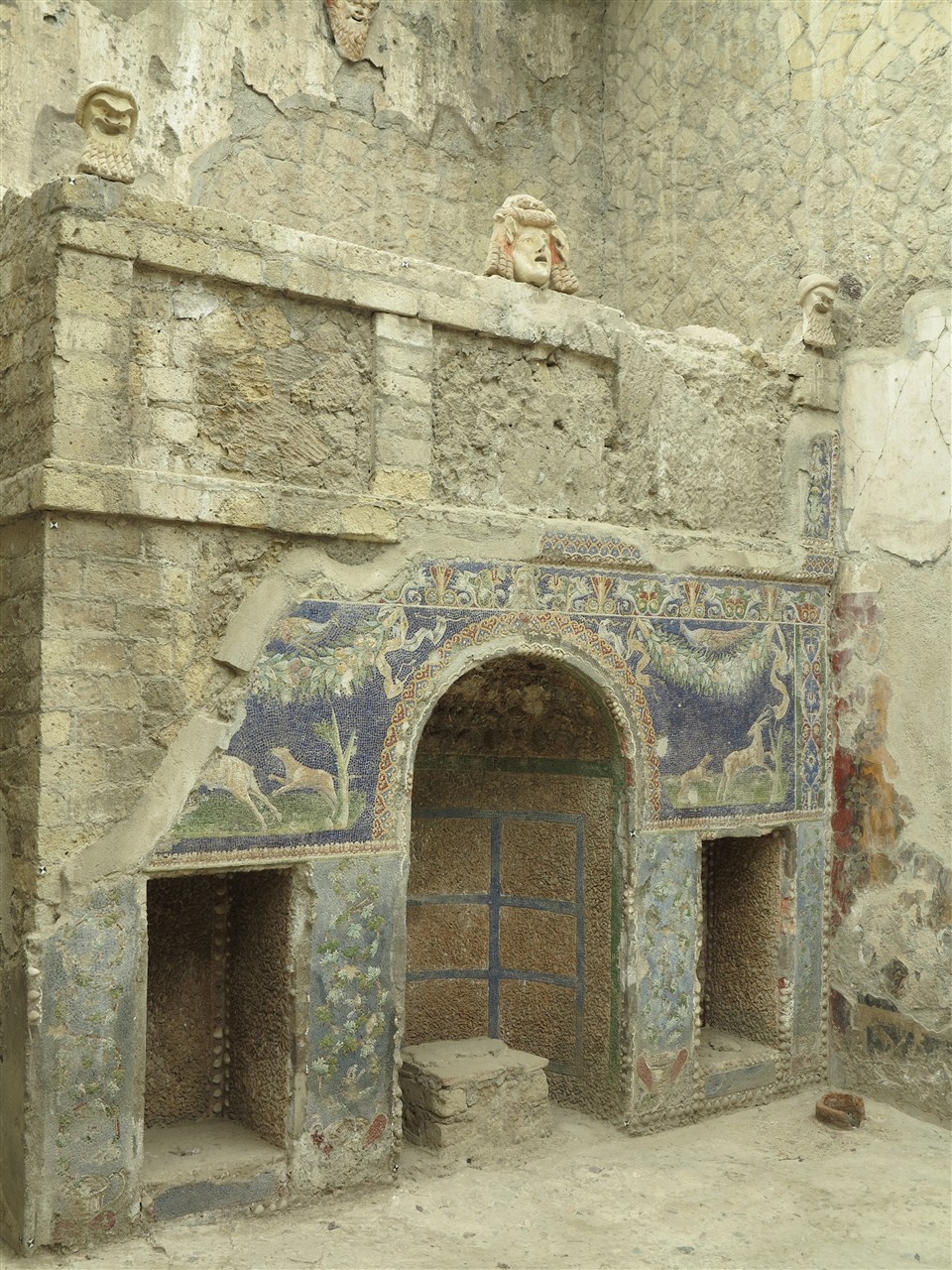
Remarkable mosaic wall decorations survive in places
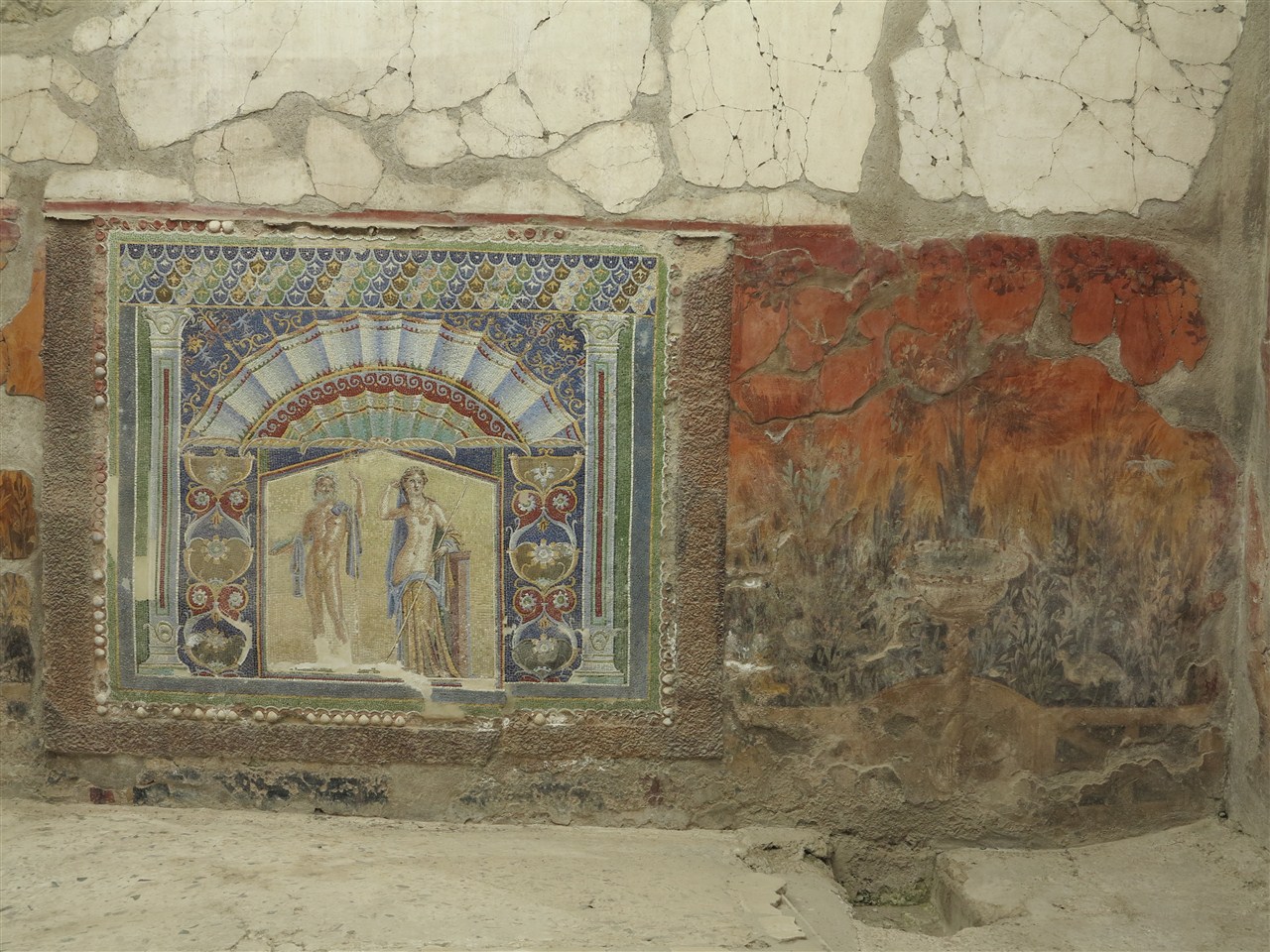
Paint is still intact in some buildings, showing how many would have looked in period
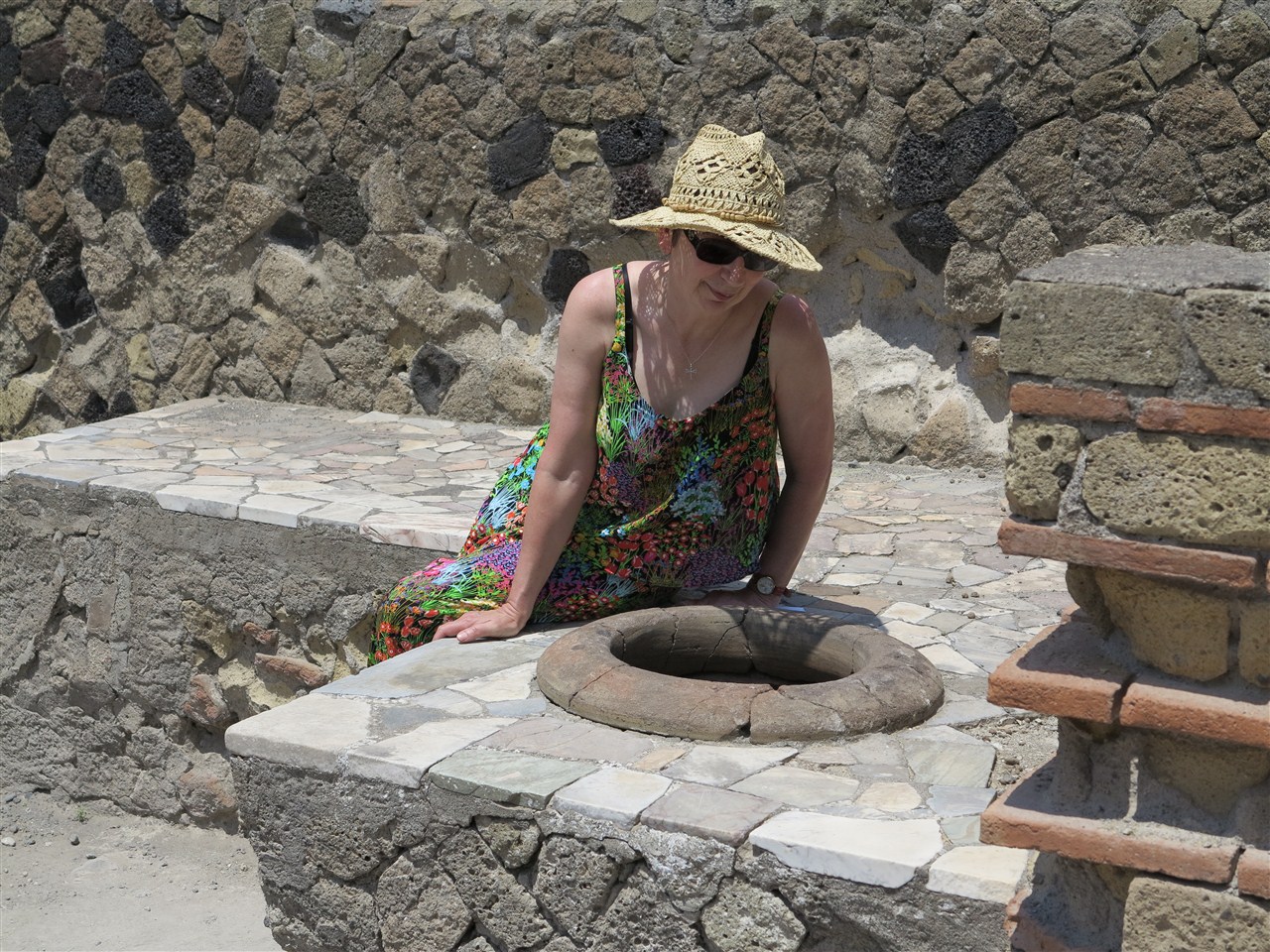
Mandy - Feeling peckish?
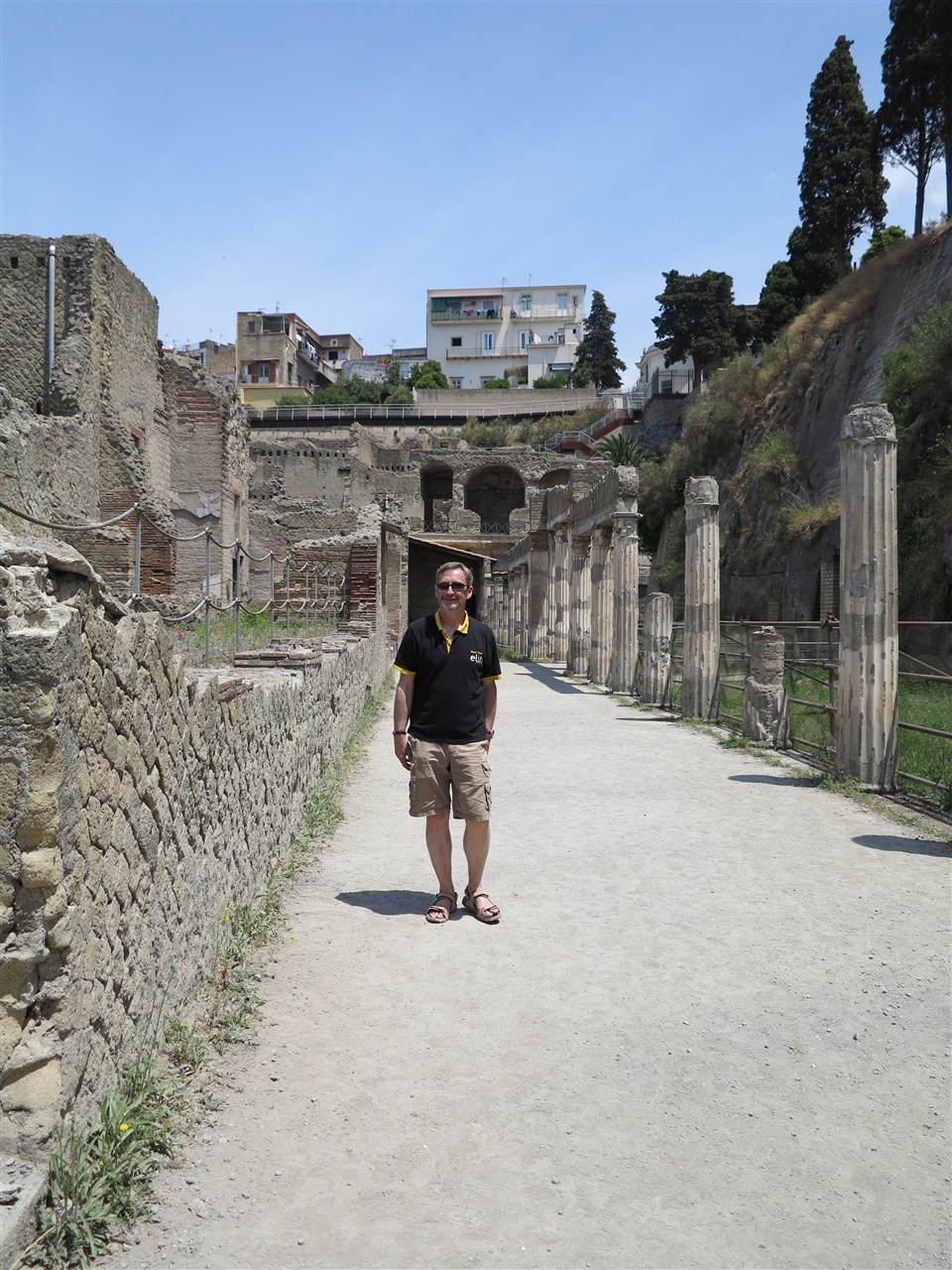
Me posing by the 'events area' of the town - Sporting and other events held here
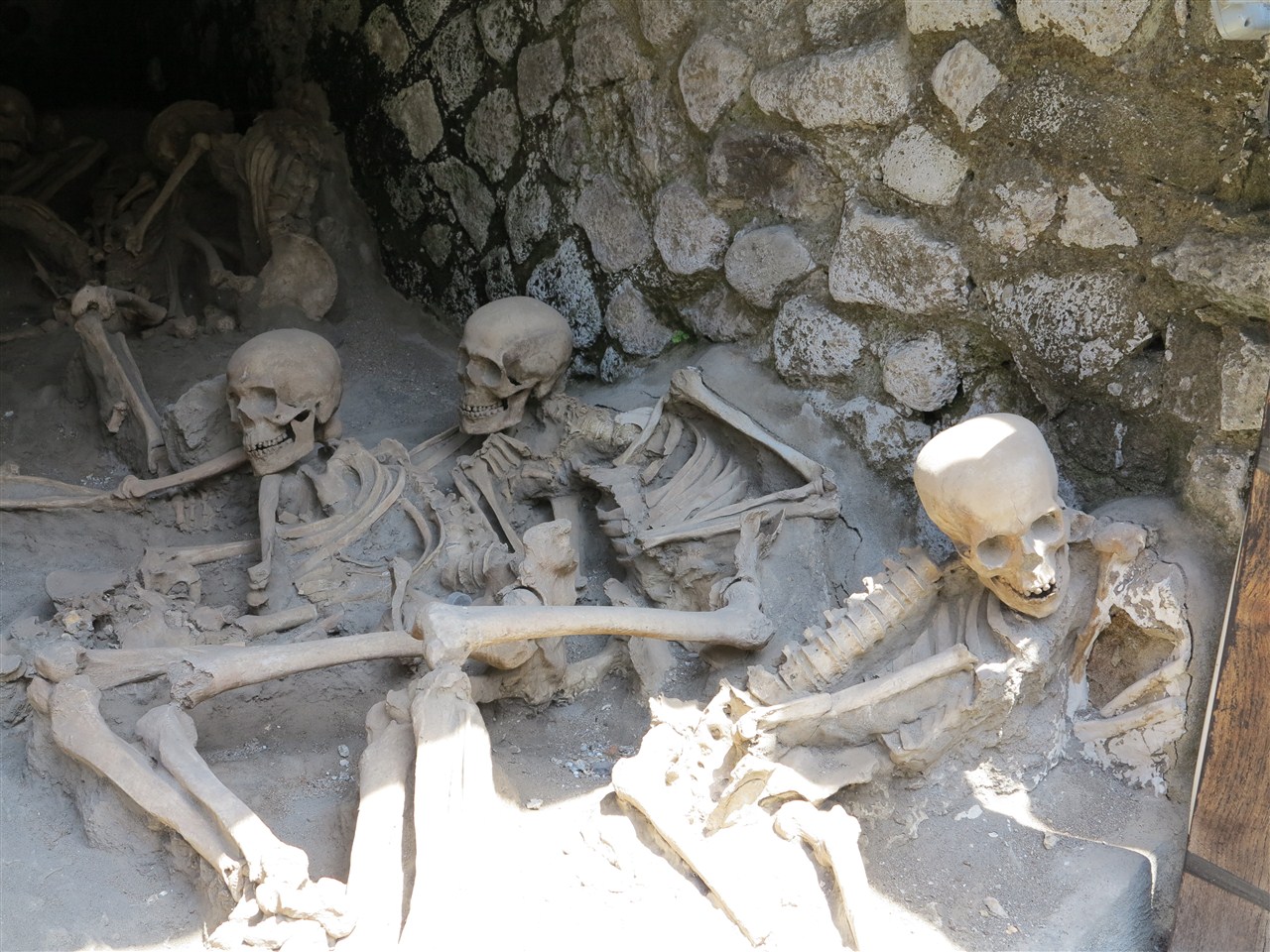
The tragic end of so many in Herculaneum - Overcome by heat and fumes waiting for rescue boats that didn't come
If you’re not a little affected by the tragedy, I’d have to wonder about you.
We had a pizza for lunch (when in Napoli!) and then headed back to the station and returned to Naples. We intended to do the ‘underground tour’ from the Church of San Paolo, but somehow ended up in the rather truncated one under the Church of San Lorenzo. It’s not a bad tour, but it doesn’t go terribly deep OR very far and we felt a bit disappointed.
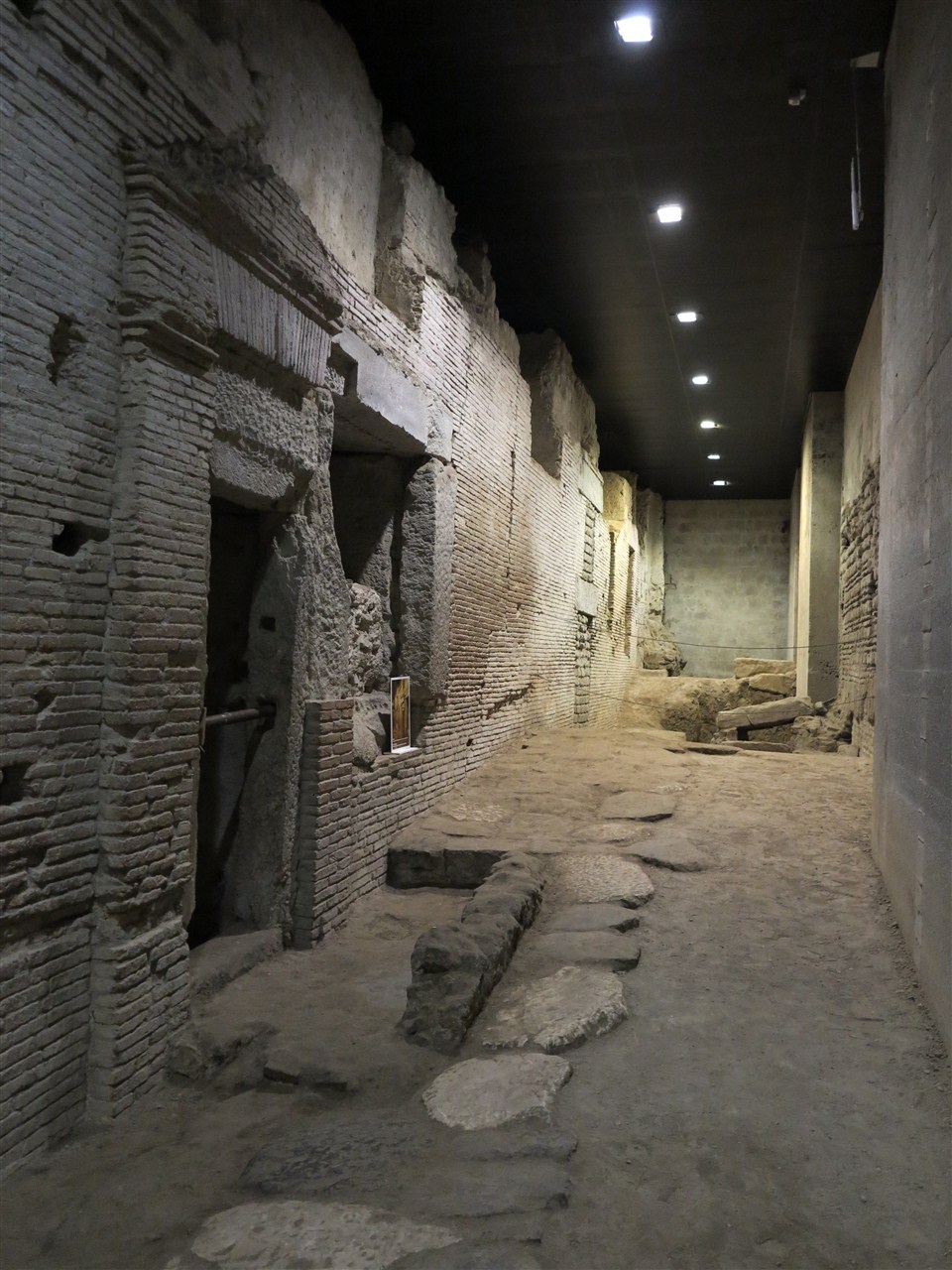
Roman street under the Church of San Lorenzo
However, as we left the Piazza San Gaetano, I spotted the blue and white flags we’d been looking for and realised there were two tours, this one descending through the much deeper and longer Aquifers under the city.
For an extra Euro (10 vs 9), this was much better value, although if you’re claustrophobic and/or particularly interested in Roman architecture, the shorter one would be better.
We descended a long staircase (down to 40M below the city, apparently) into an area originally excavated by Hellenic settler (pre-Roman) for the rock and later used to store water and act as rubbish dumps and bomb shelters.
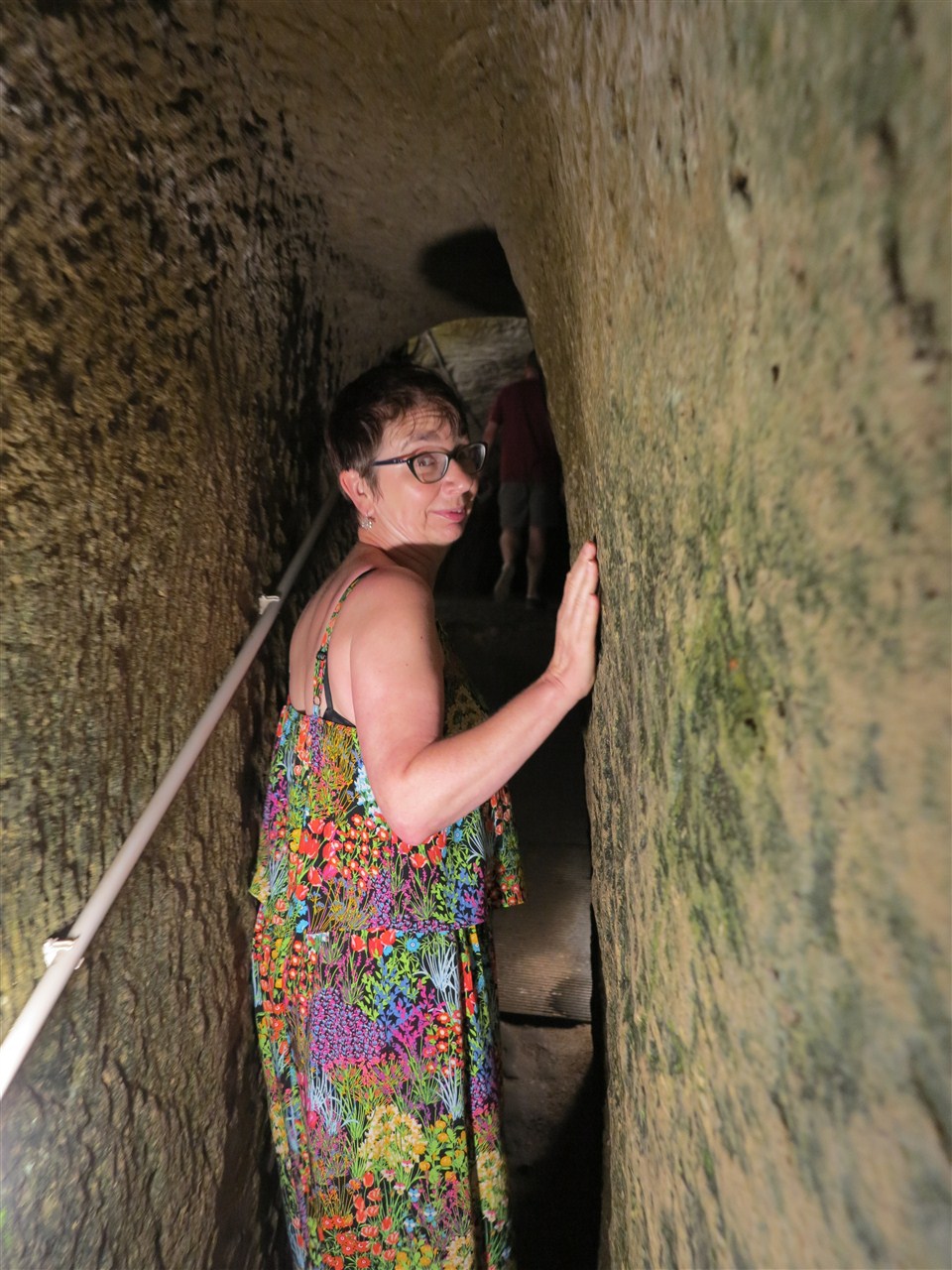
Narrow passageways of the aquifers might be too much for claustrophobics or the bigger built!
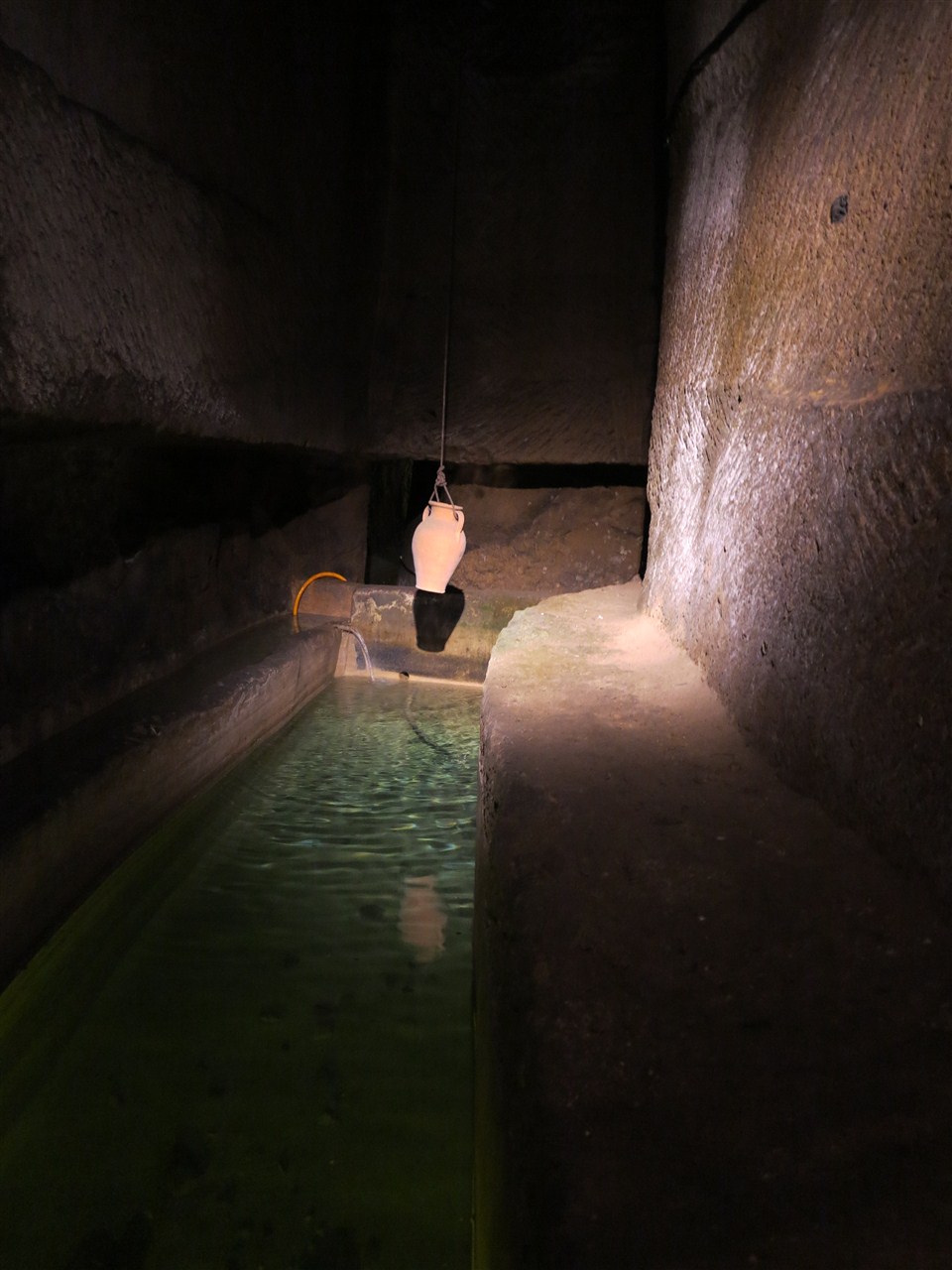
The flooded old quarries beneath Naples were accessed through wells drilled from, mostly, private properties
The tour took us through various narrow (in some places my shoulders wedged me in without putting my arms ahead of me and I’m not particularly broad shouldered!), dark and twisty passages.
One section was explored by candle light and featured some water in places, to give a feeling of what it would have been like for the people employed to keep the aquifers clean (This is optional, but everyone - over 20 - on our trip did it without any problems).
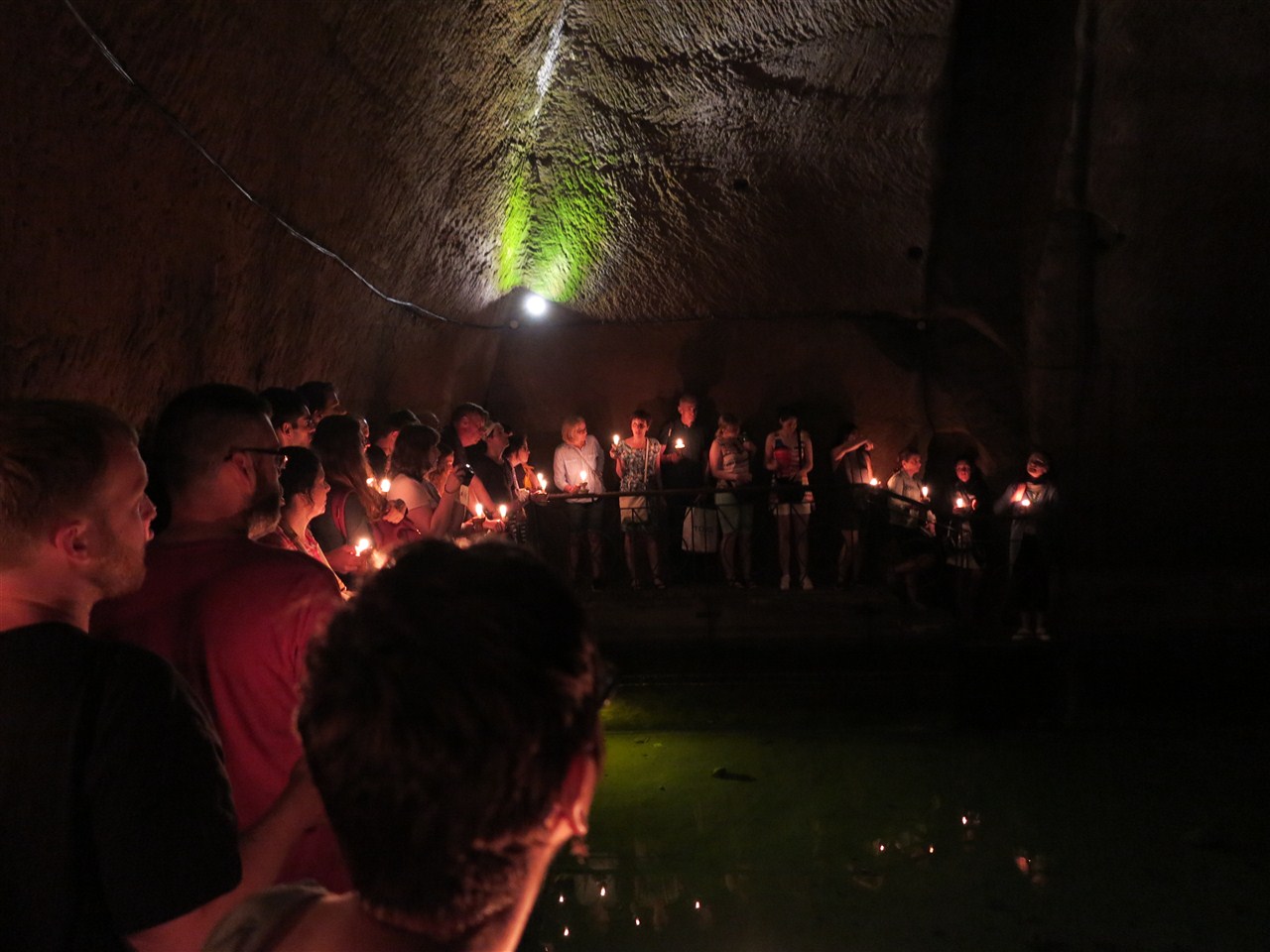
The tour can be dark as well as cramped, but it's great and those unhappy in the dark can skip this part - Don't though, would be my advice!
Finally, we came back to the surface and visited the remains of the old Roman Theatre, but to be honest, it’s quite hard to picture the large structure as it is now subsumed into numerous more modern buildings.
Overall, though this was a great trip, taking around 90 minutes, and we’d recommend it. It was good to have done both, actually, but if you can only do one (and aren’t worried about tight dark places hundreds of feet underground) do this one.
We ate a cake from a shop on our way back to the Montesanto Funicular and then made our way back, tired, but happy with our day, to the hotel.
We had no particular plans for our final day, but Mandy suggested we take the Funicular up again and visit the Castel St. Elmo.
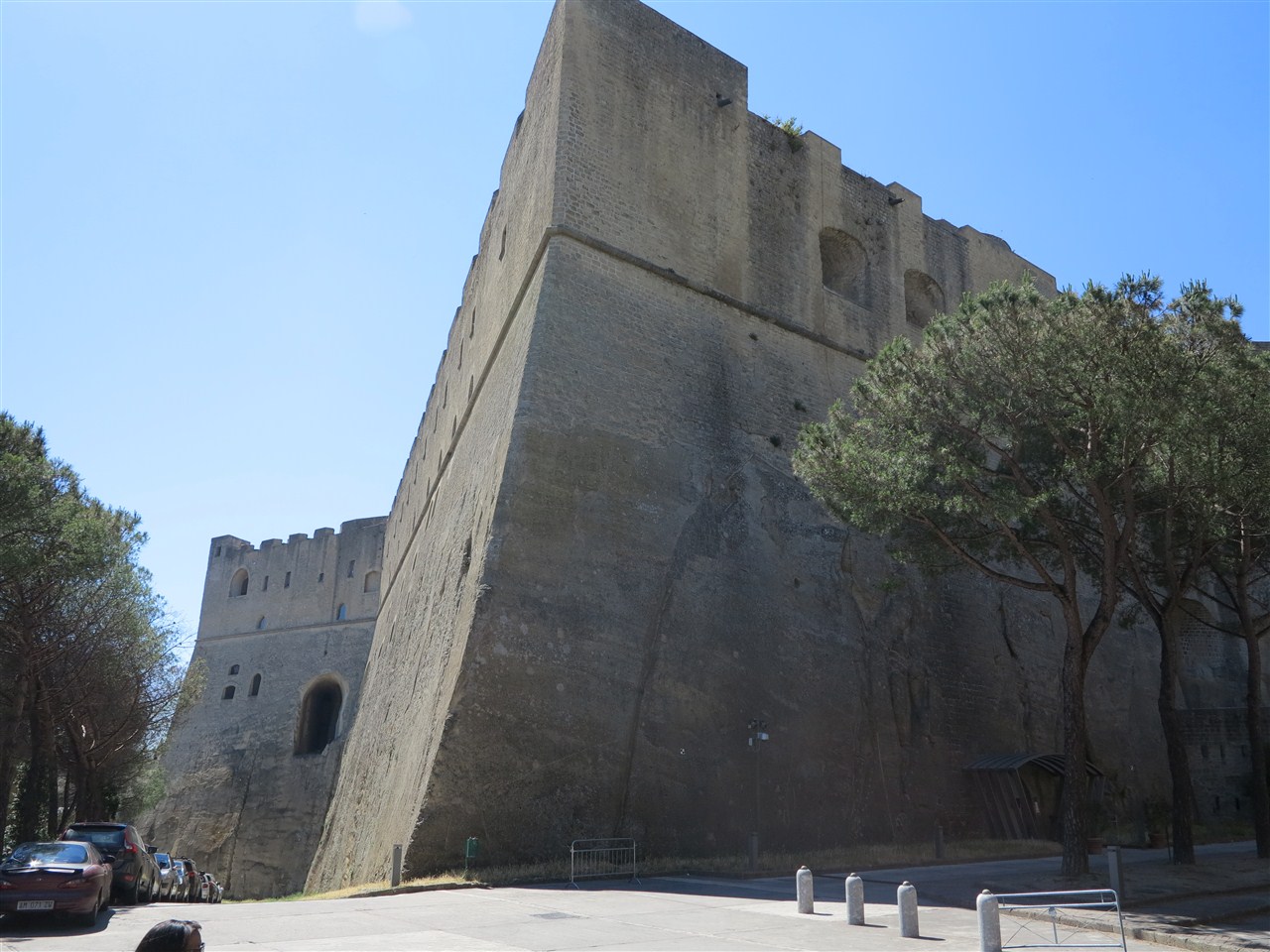
Impressive walls of Castel St. Elmo, above Naples
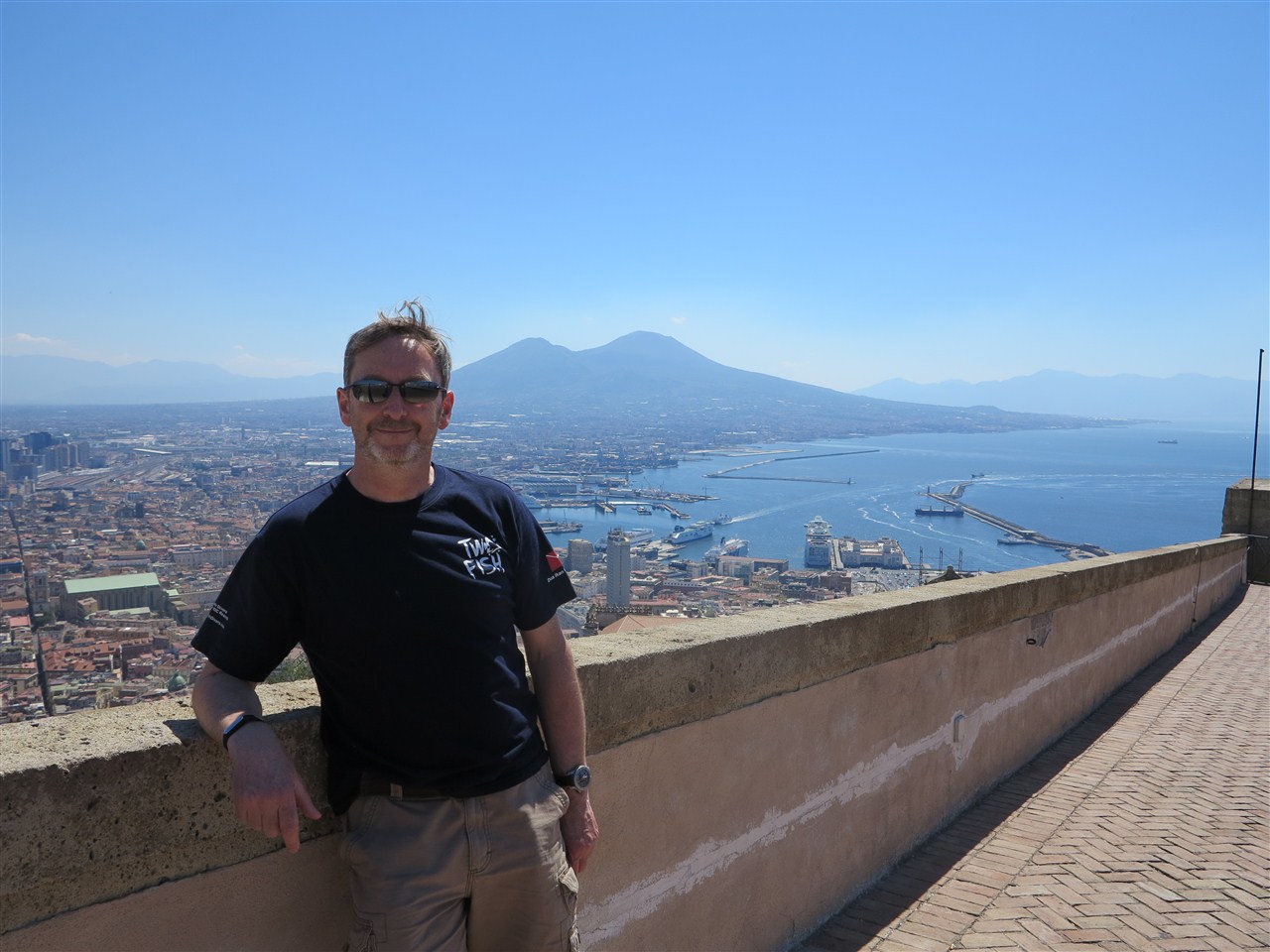
Views over Naples, Vesuvius and beyond are incredible on a clear day like this one
With the great weather we’d been having (and a little less smog/haze) this proved a great suggestion as the views over the city and the bay were fantastic.
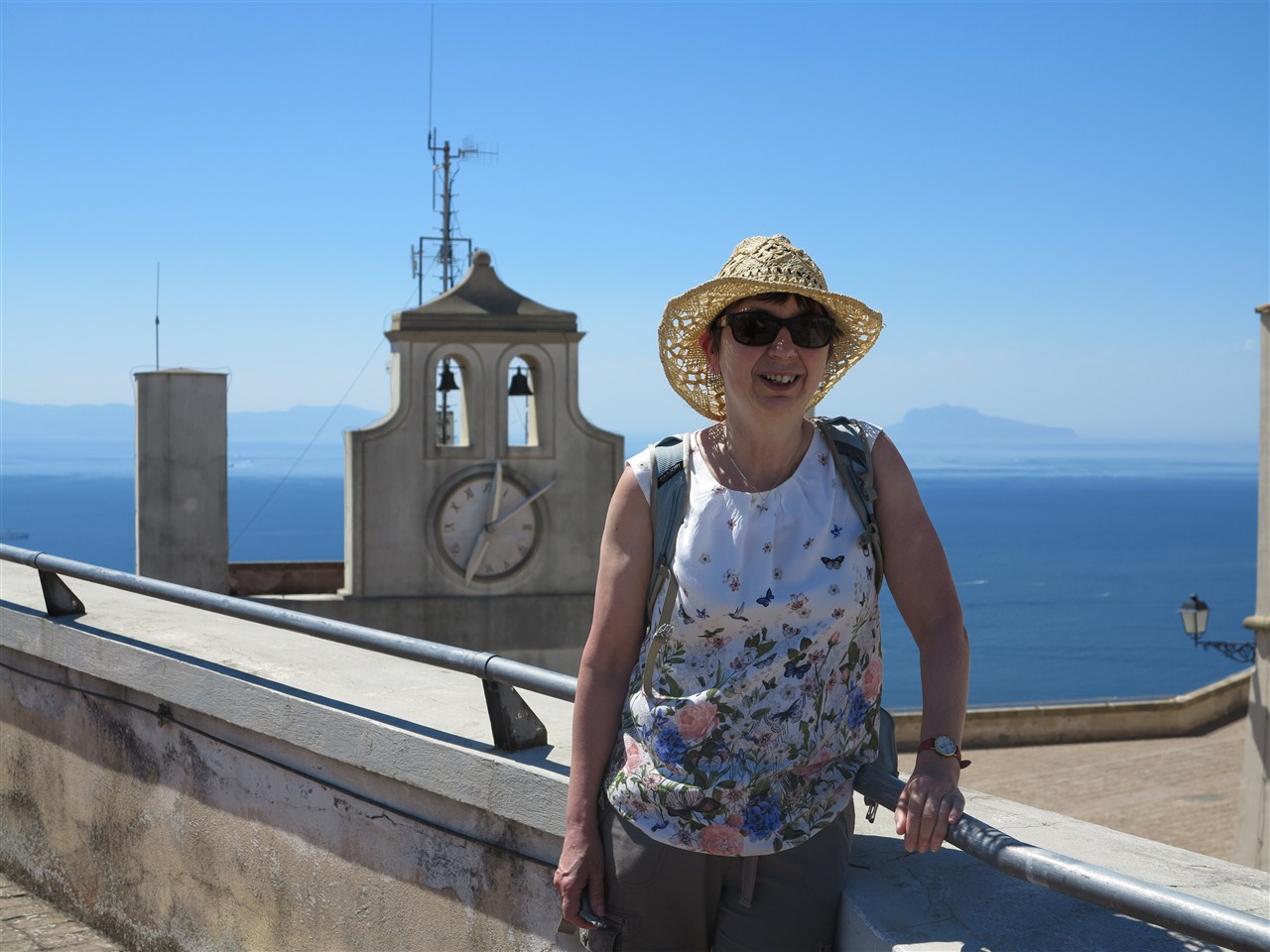
Crazy clock behind Mandy and Capri over her left shoulder
The crazy clock in action
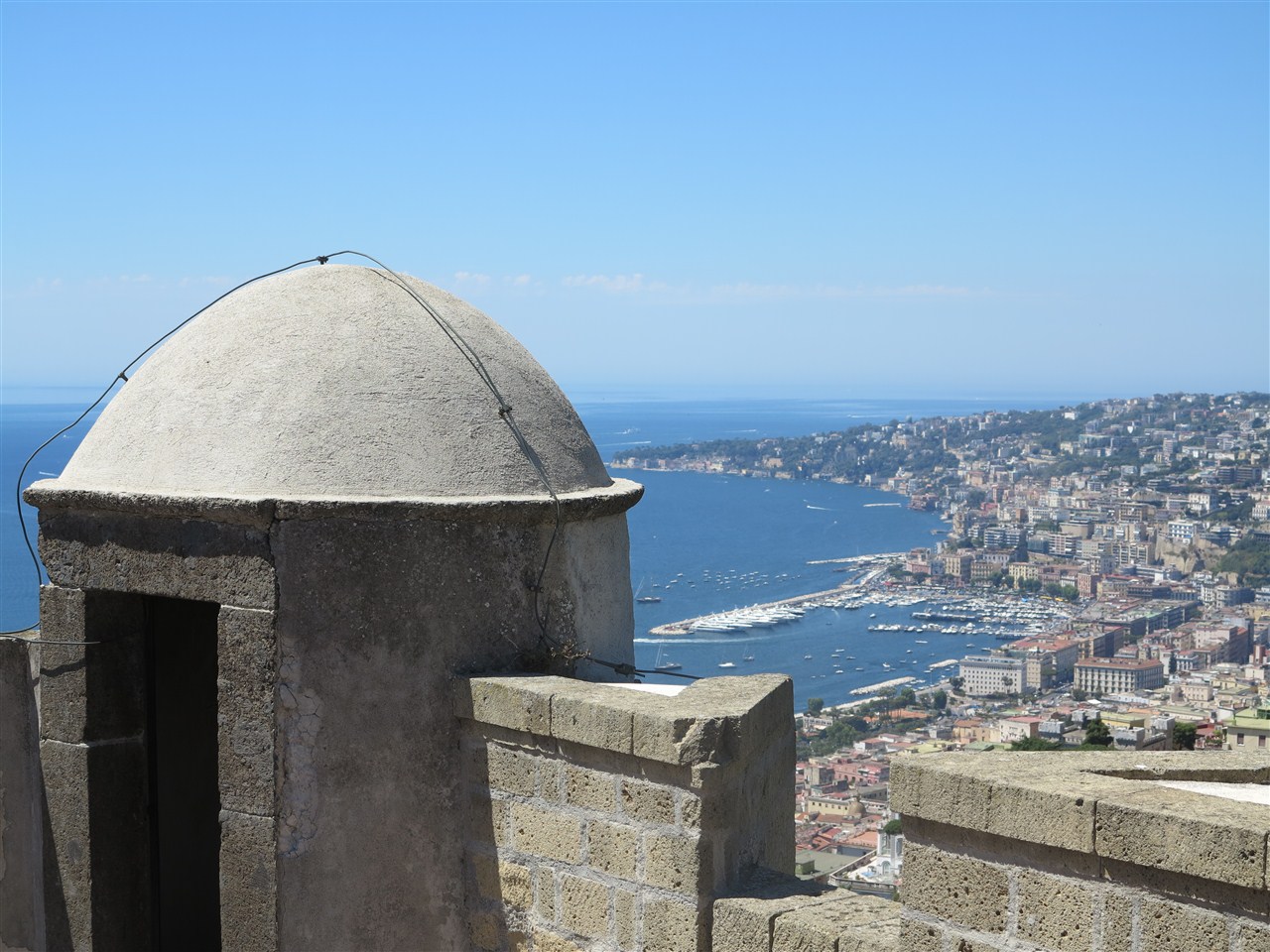
Yacht Marina and view towards Baia
We spent some time walking around the Castel twice - There are few rooms open, so it’s mostly the ramparts, the grounds and a long winding descent/ascent between them (we walked down twice, taking the lift up!).
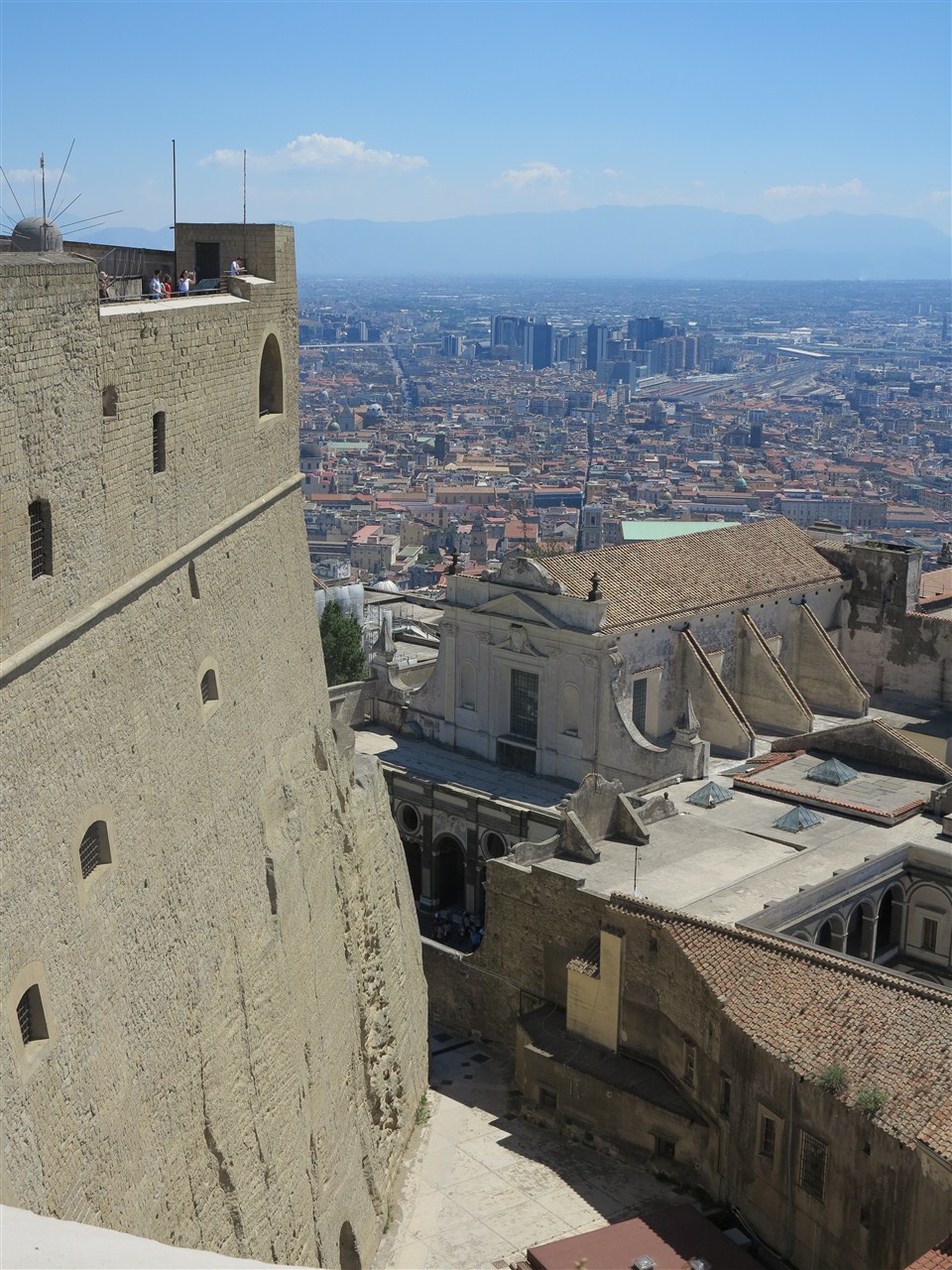
Modern Naples below Castel St. Elmo
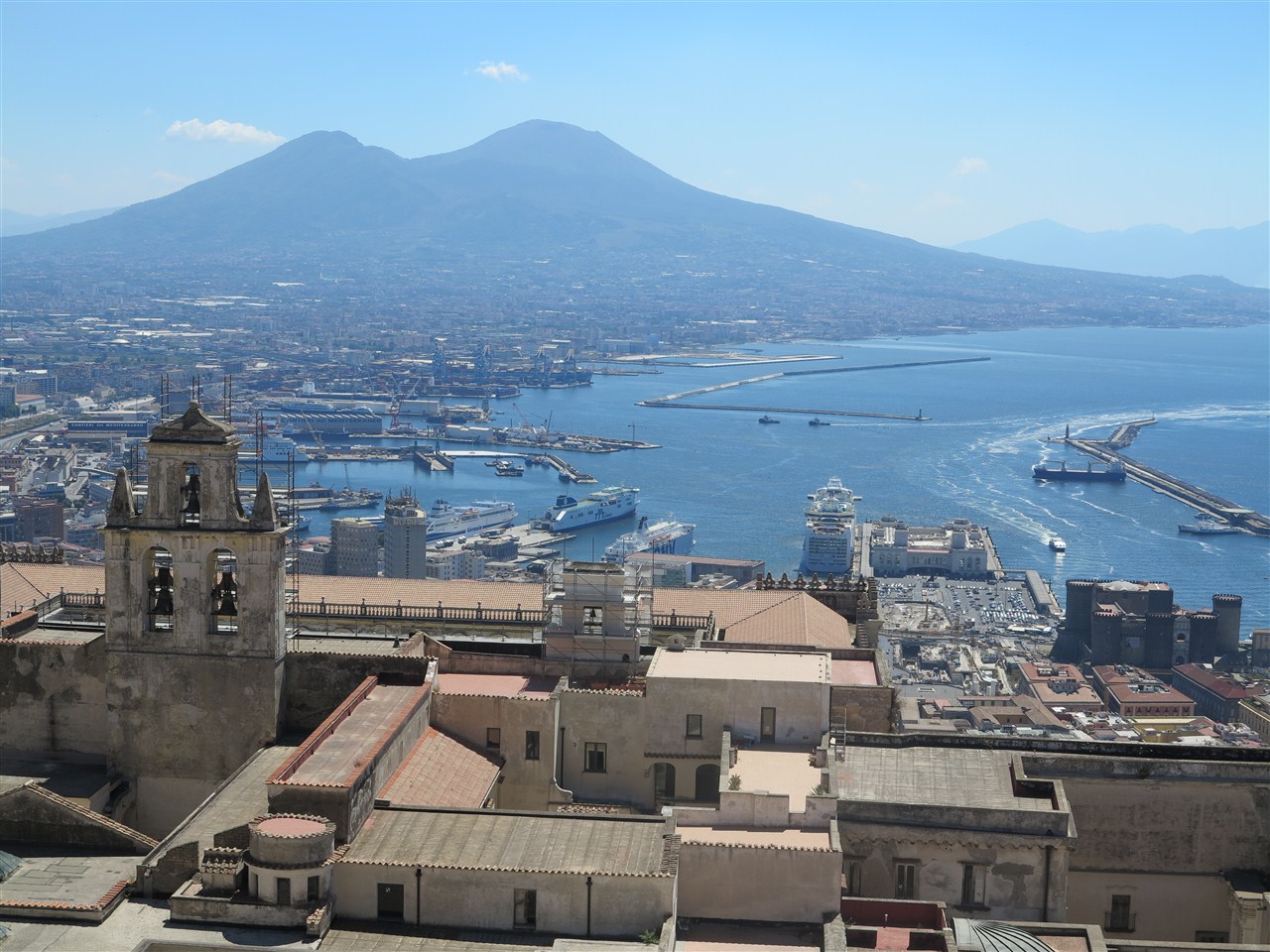
The city and commercial port - The roof behind the tower with the bells is our hotel's
Again, it seemed good value at 5 Euros.
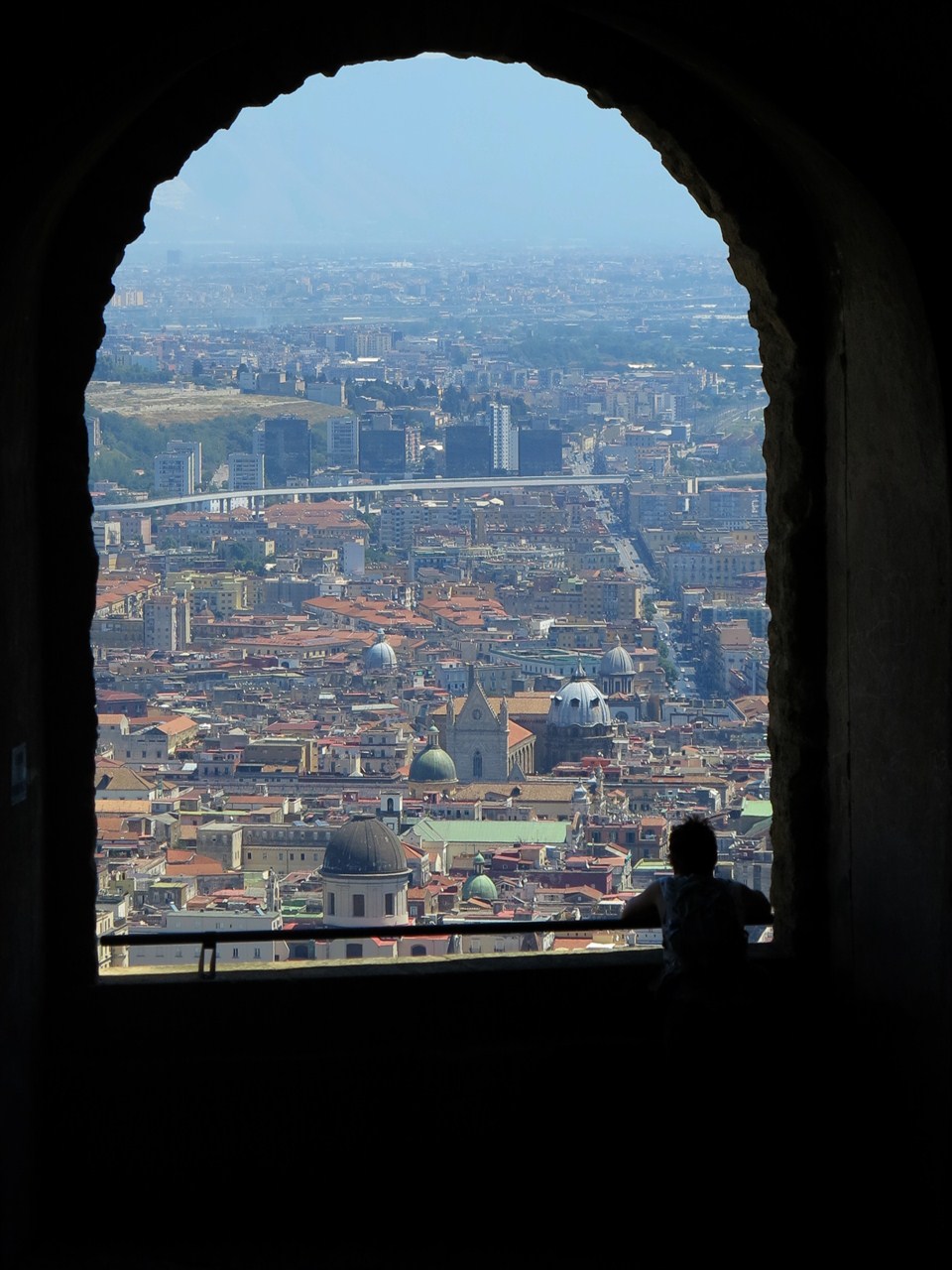
View of Naples from an archway on the 'vehicle ramp' leading from the grounds to the ramparts of the Castel St. Elmo
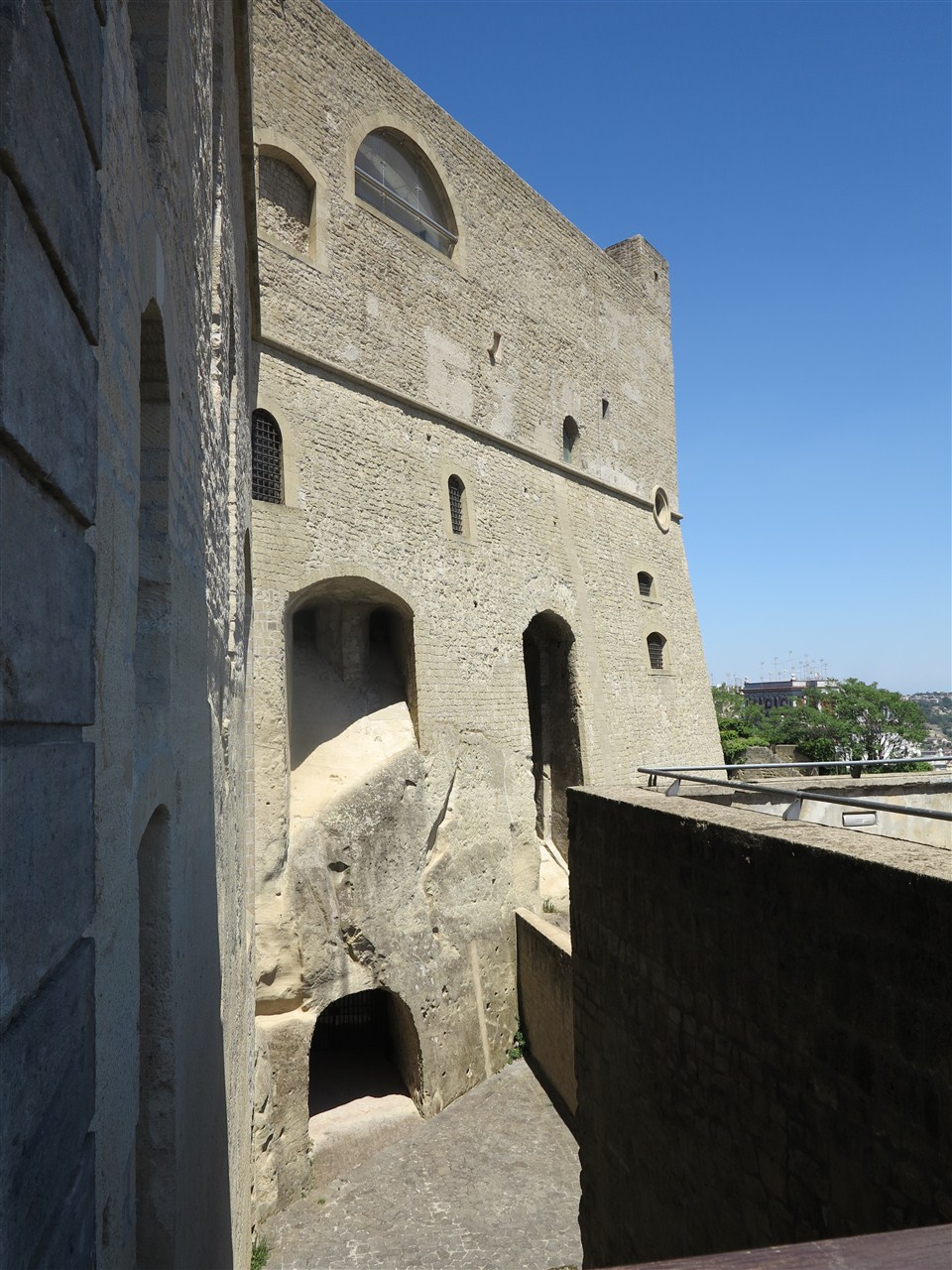
Most archways once held cannon - A few are still in place
Public transport in Naples is also very good value, with no trip costing us more than 1.50 Euros, even out to Baia and Herculaneum.
Even the 1 Euro for the funicular at Montesanto seemed excellent value as the one time we descended the Scala Montesanto the discarded hypodermic needles discouraged us from repeating the experience!
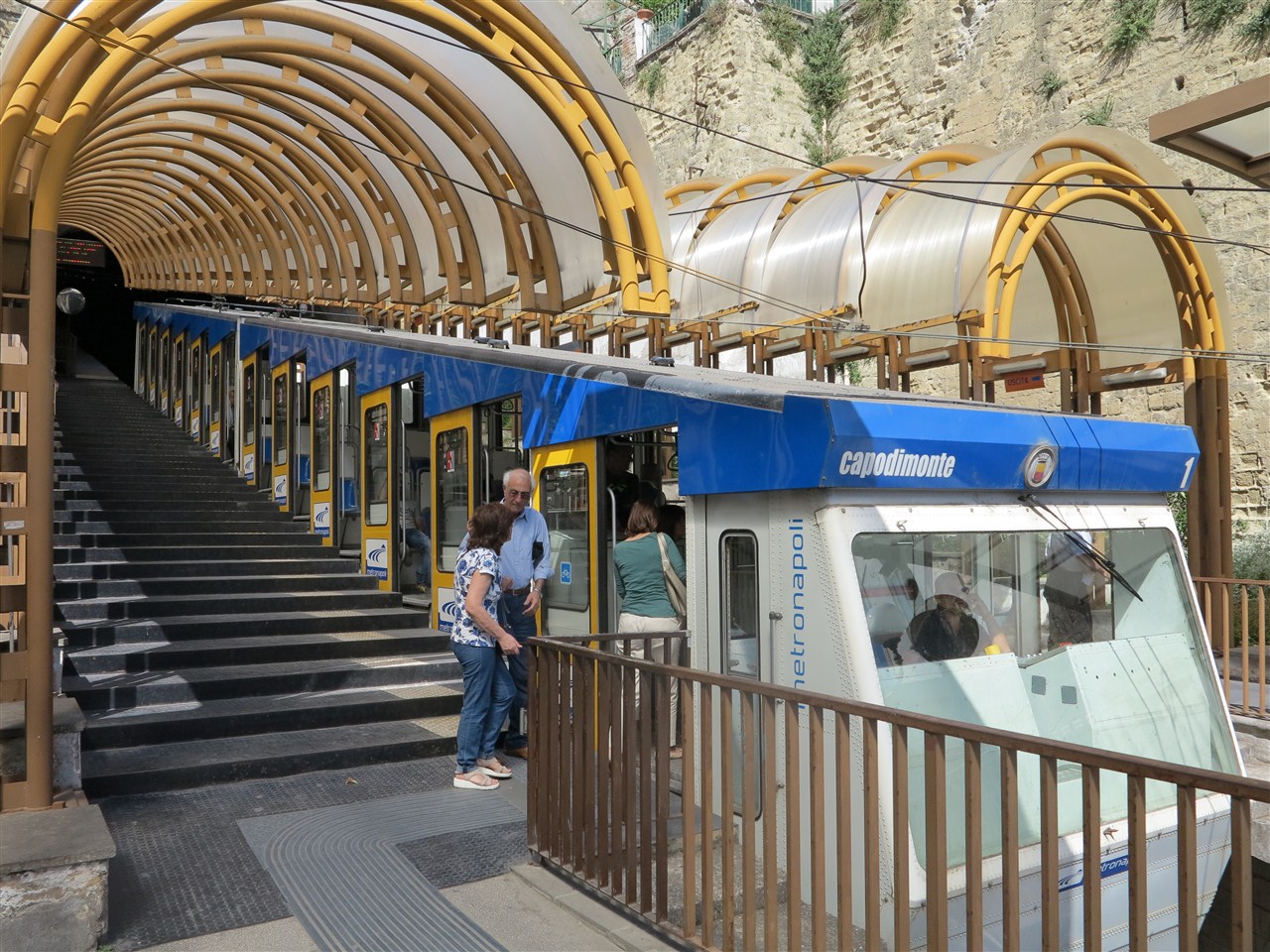
The funicular at Montesanto
Overall, we had a great few days in Naples, the weather was hot and sunny throughout and the sites we visited lived up to our expectations on the whole.

Panorama of Naples from Castel St. Elmo
Naples itself lacks the beauty and glamour of Venice, Rome or Amalfi.
Neither of us would rush back to Naples, as the streets are dirty and rubbish (and worse) strewn in many parts, but it has a character all to itself and I can imagine that others would find it a very vibrant, exciting city.
We’d both like to go back to the area, sometime, to visit Baia again (especially the land ruins, but I think I need to dive on that mosaic) and probably, with our interest refired, Pompeii for a more thorough look around - perhaps in the autumn or winter though!
